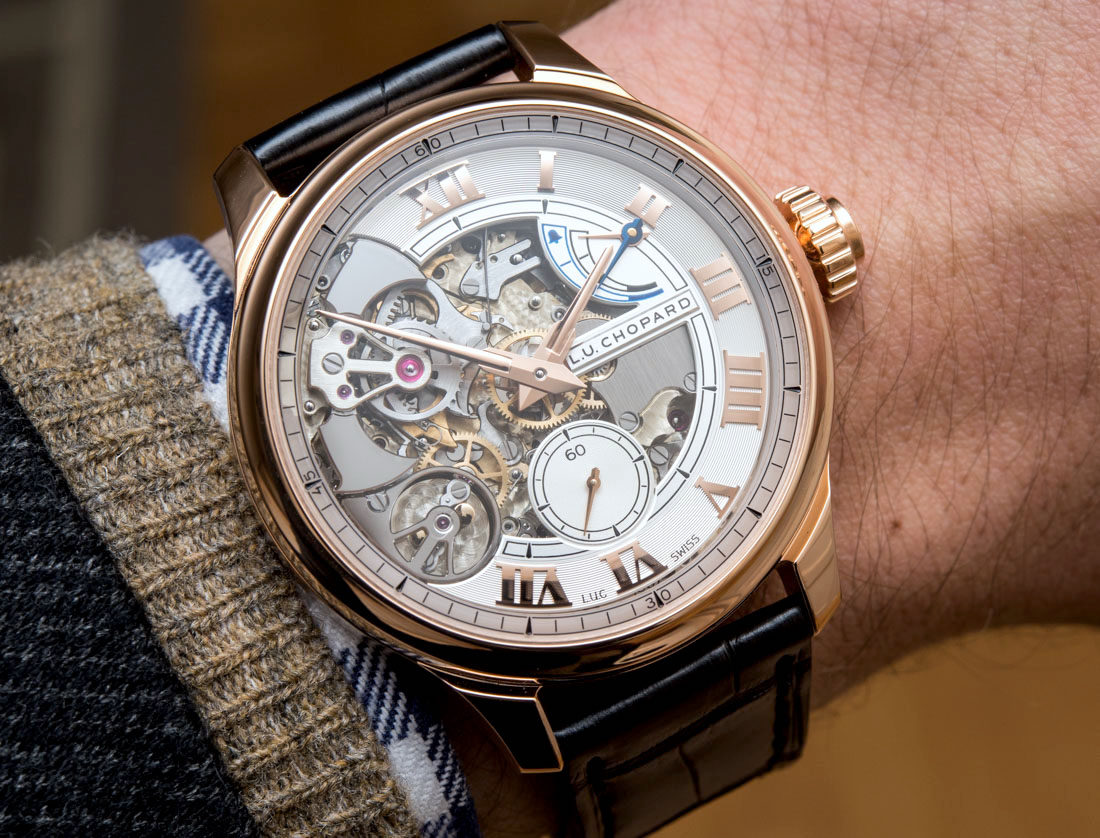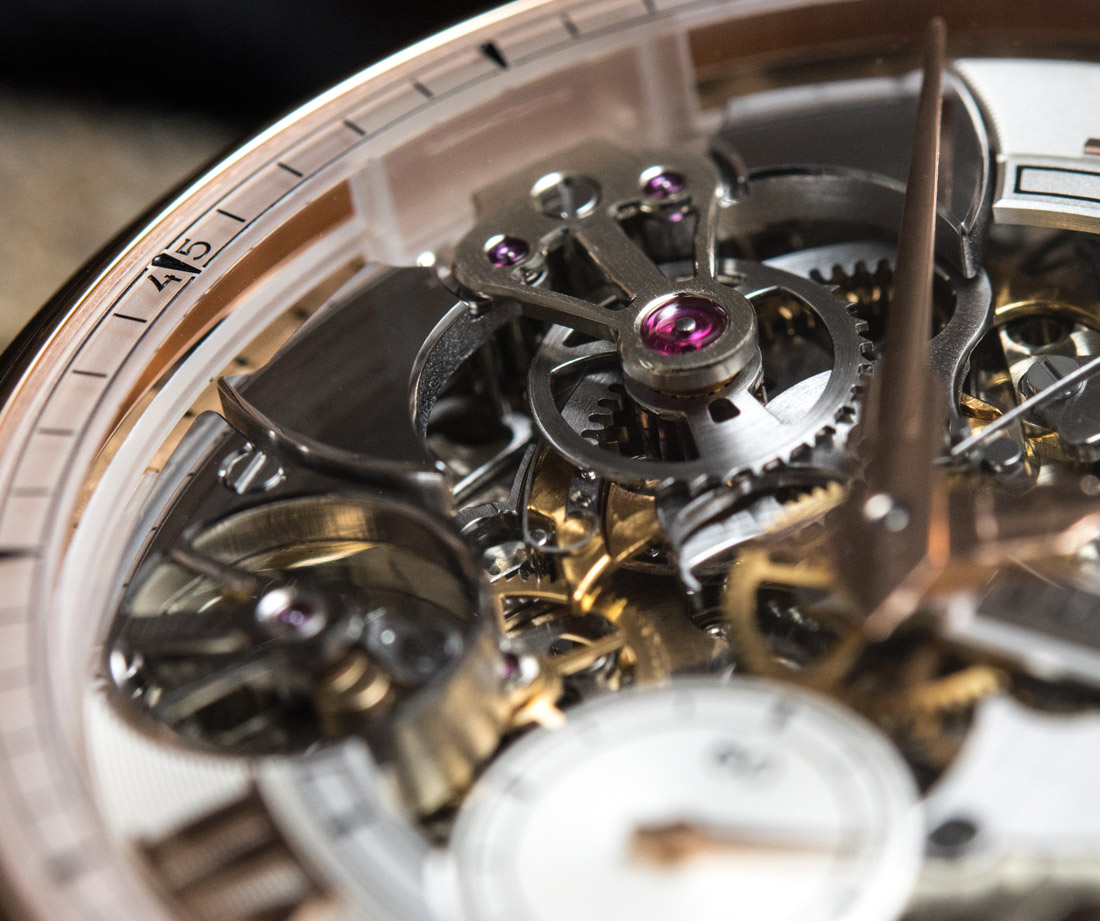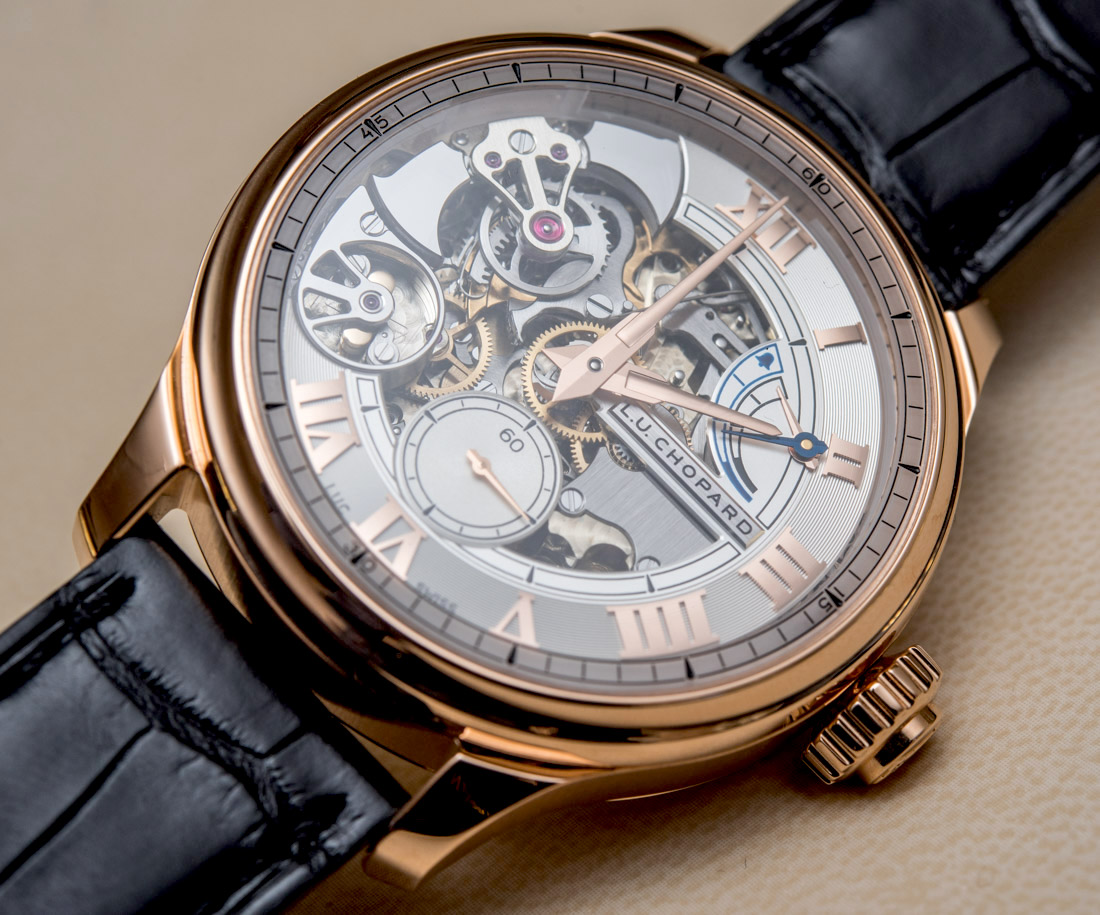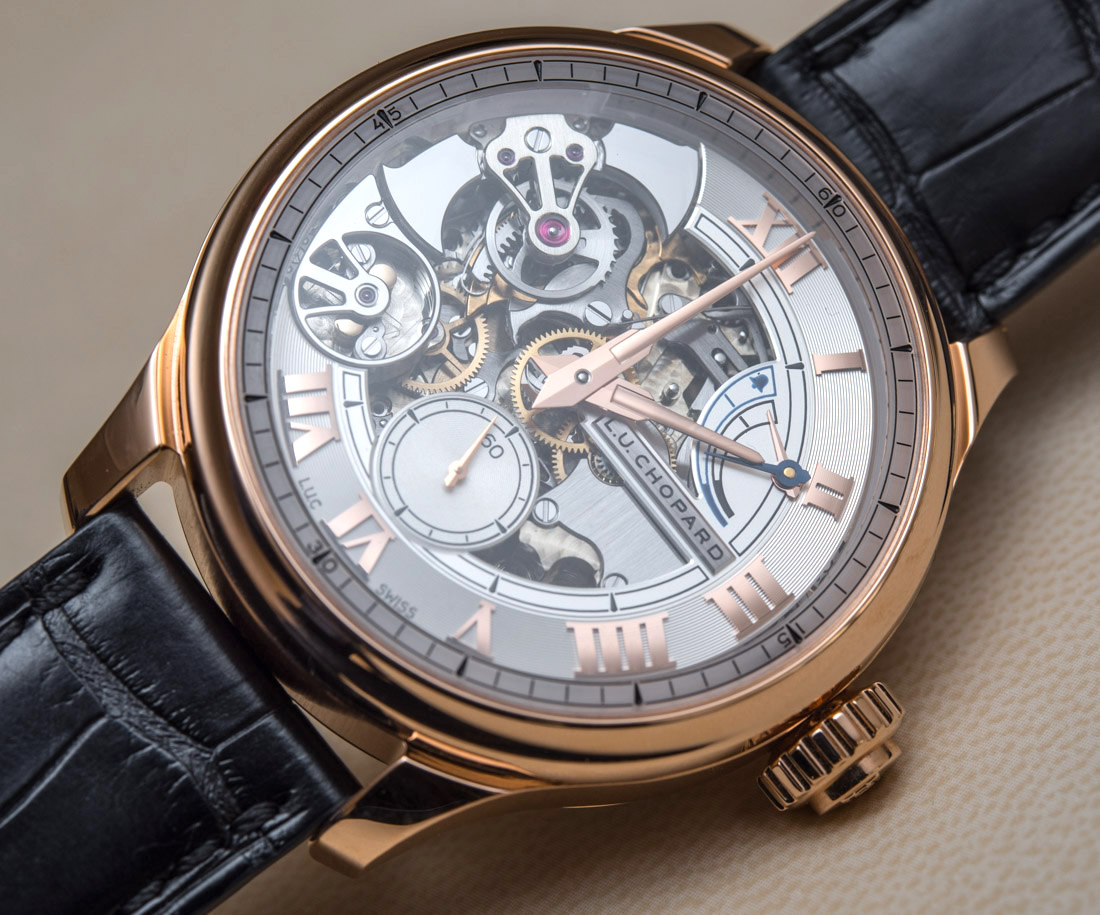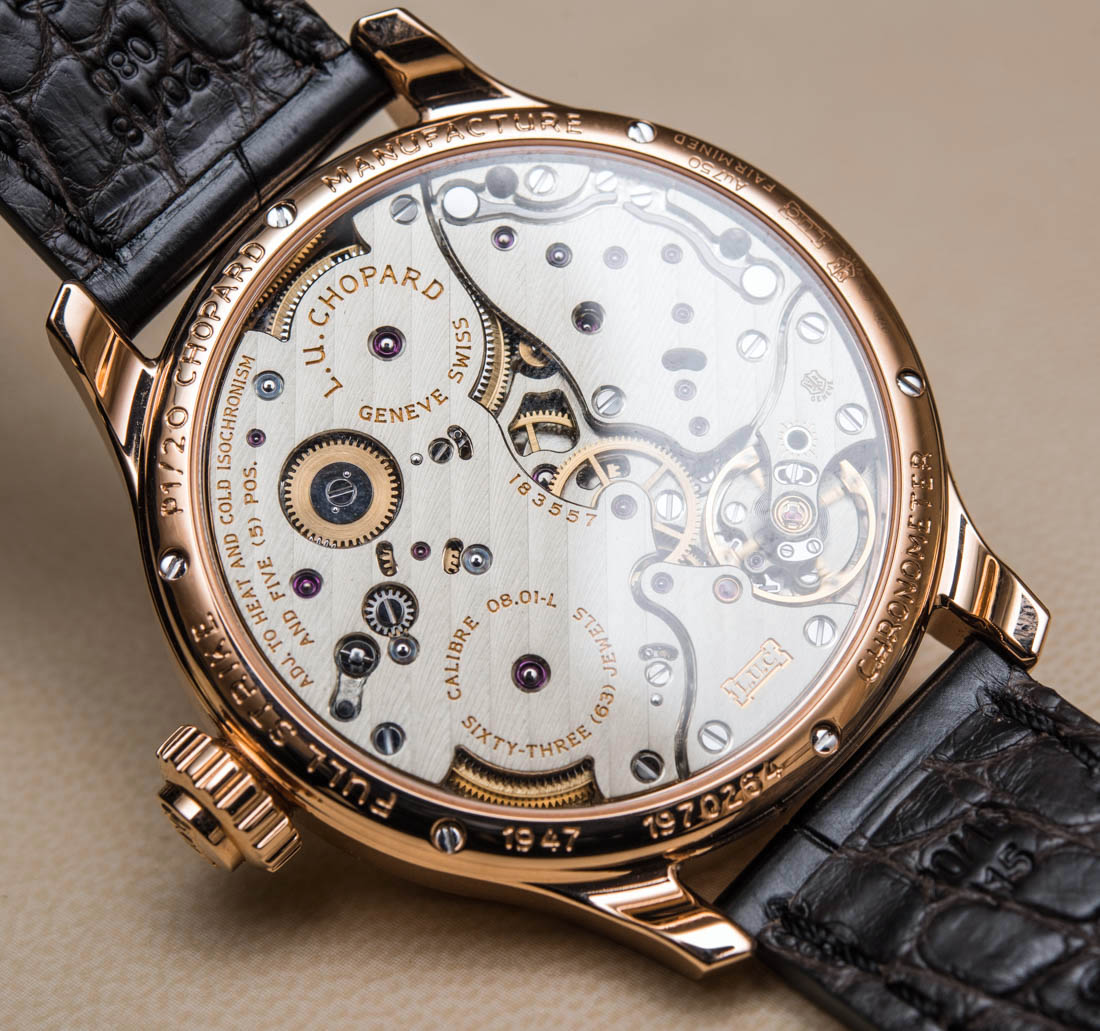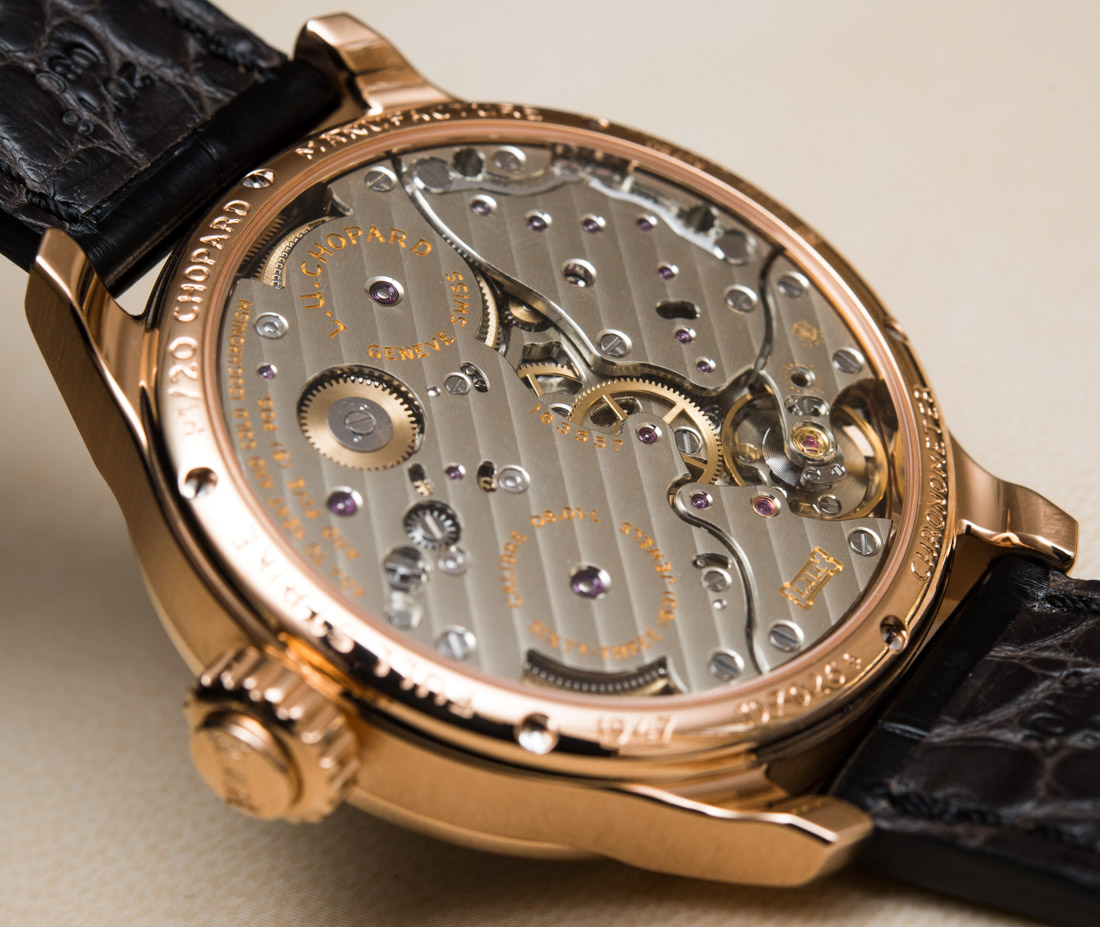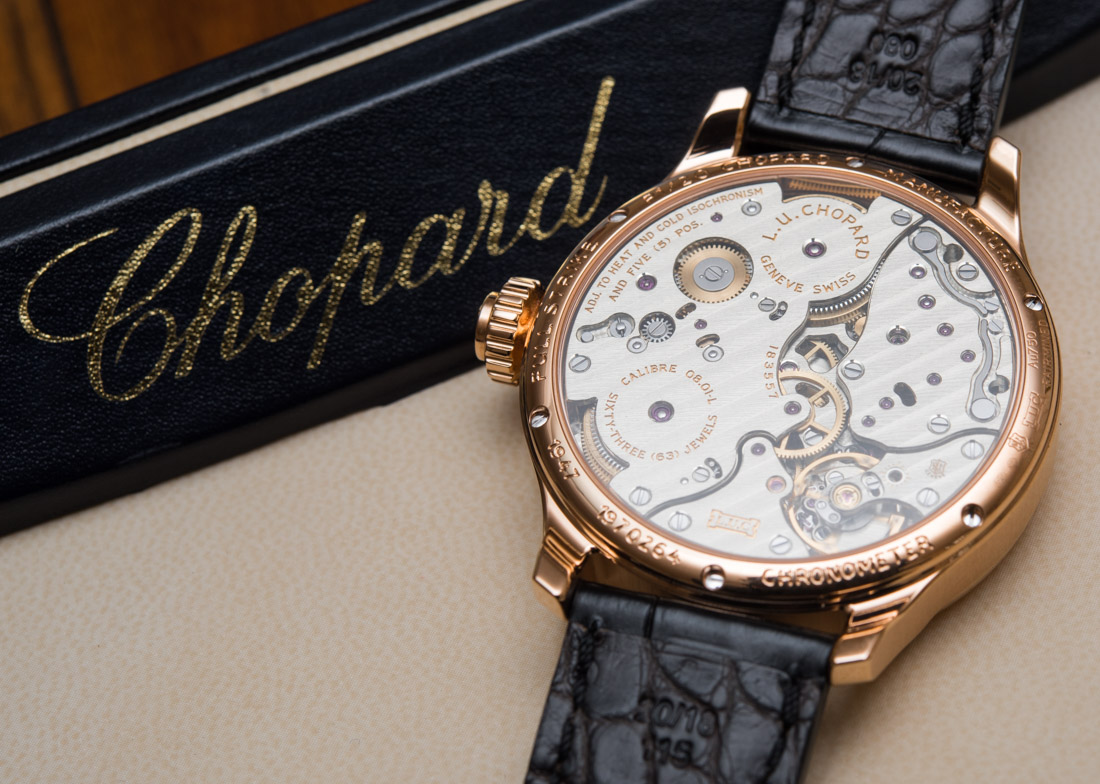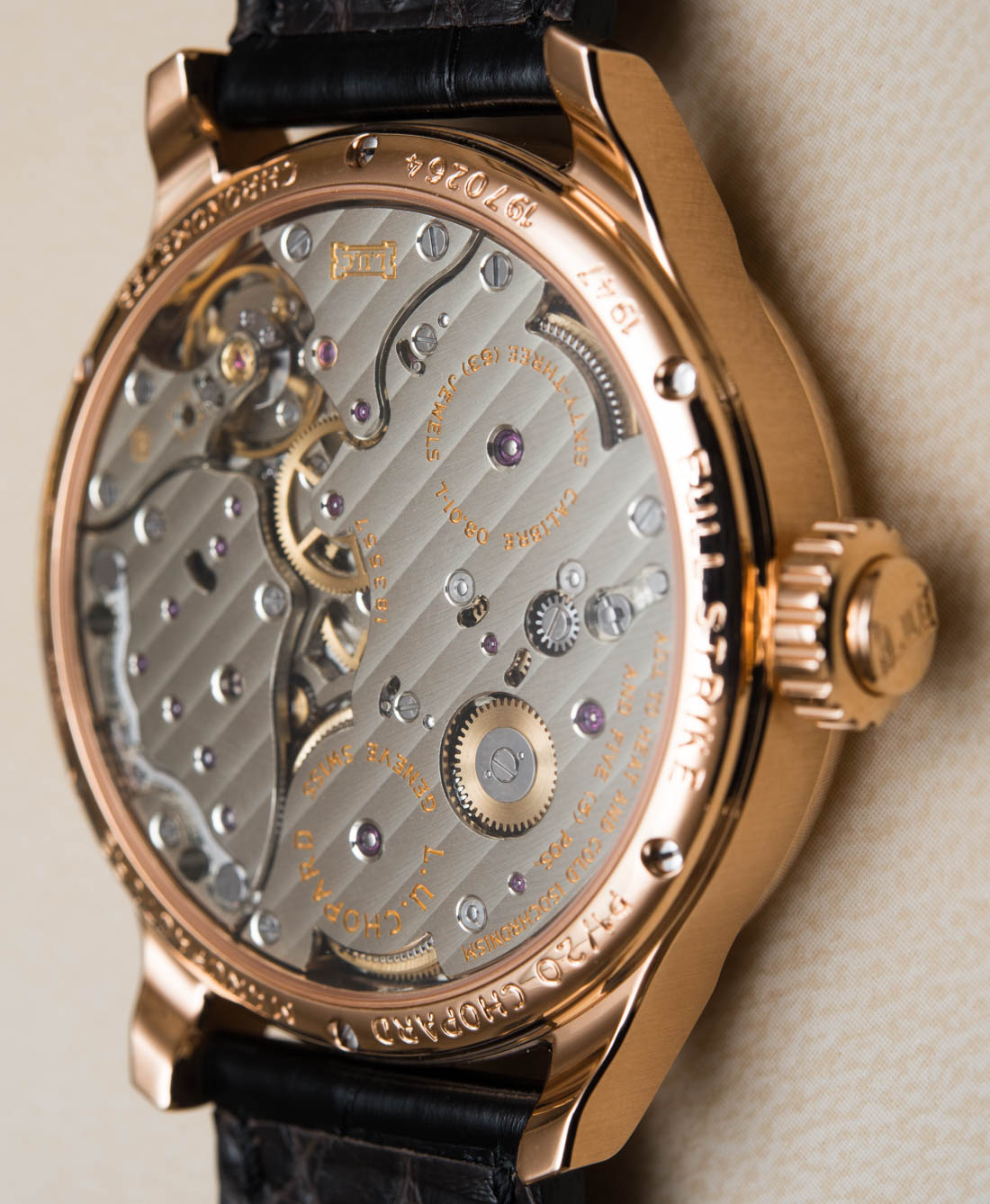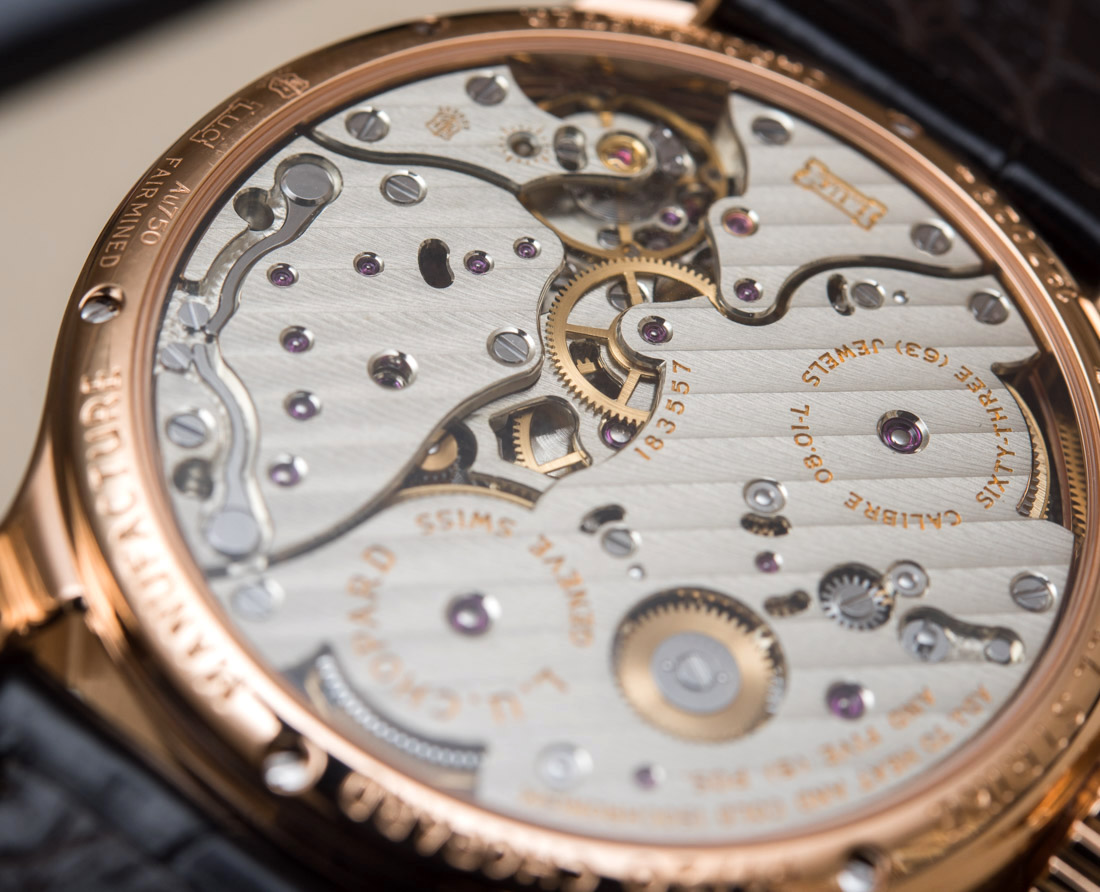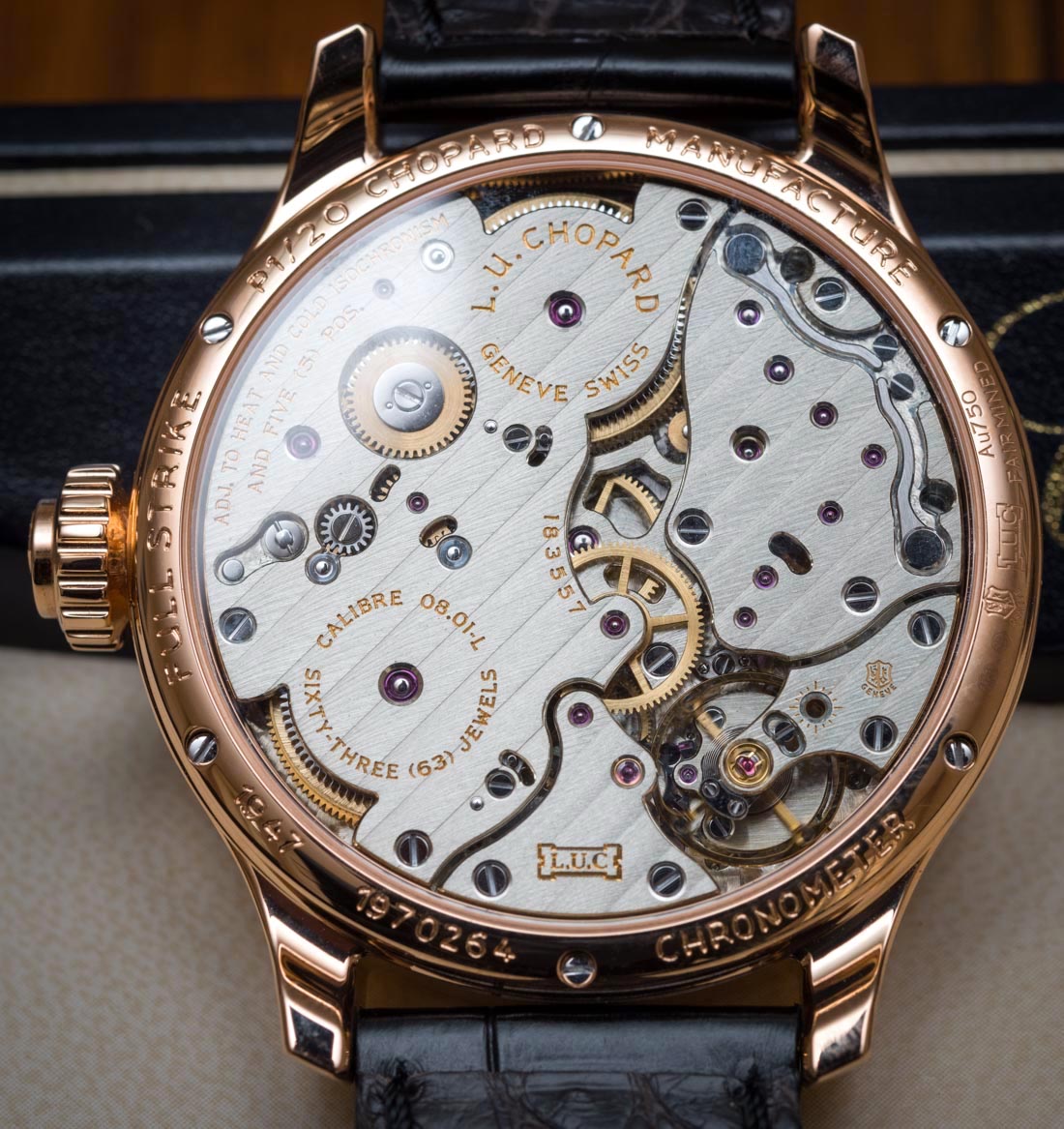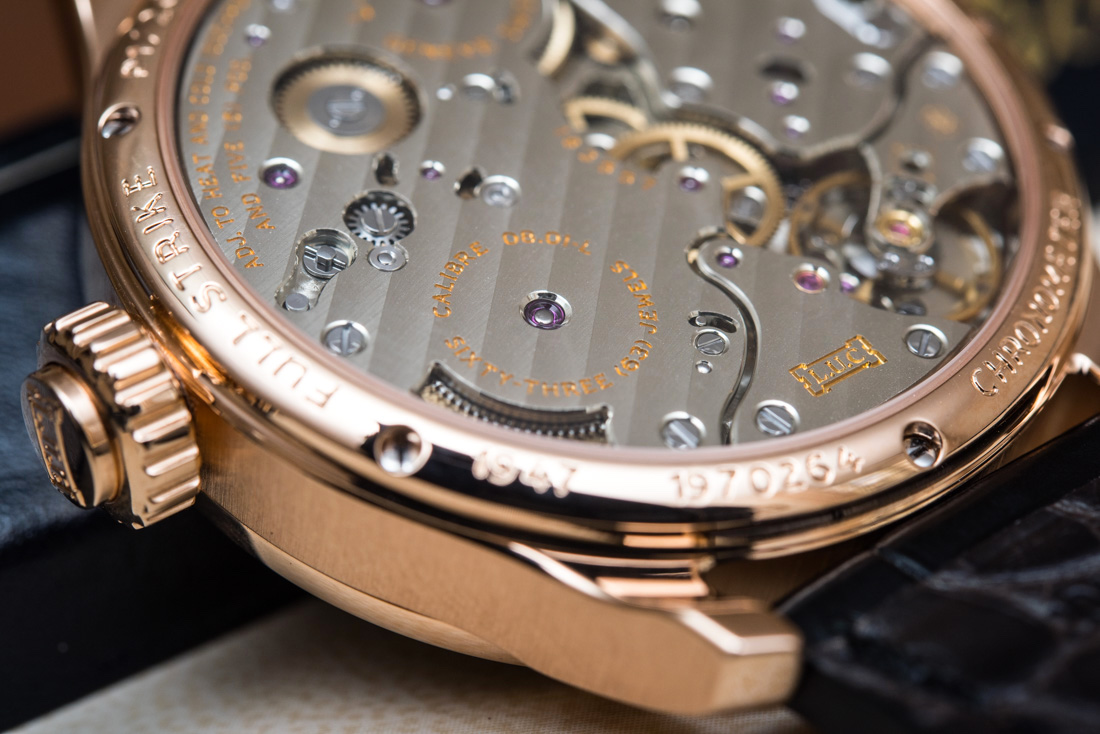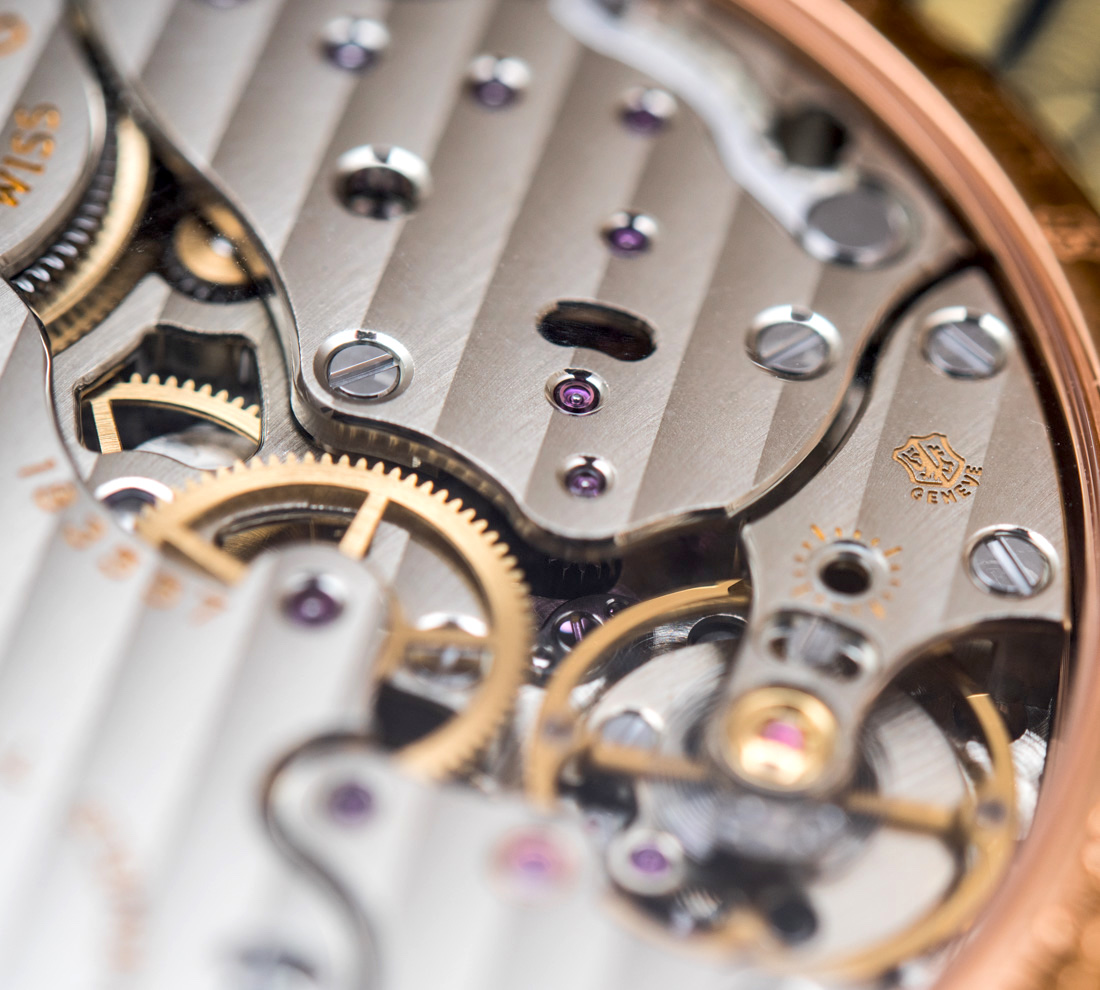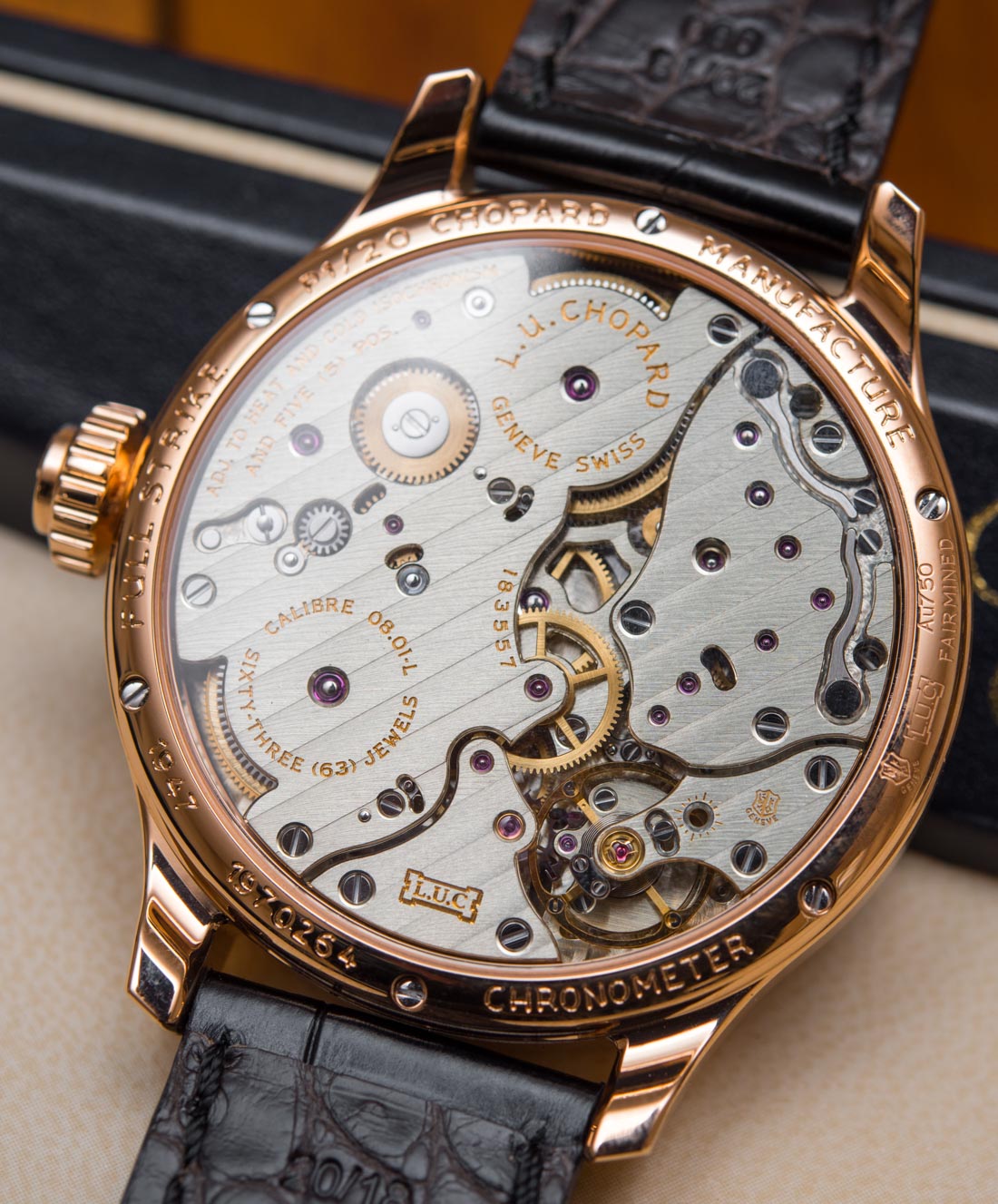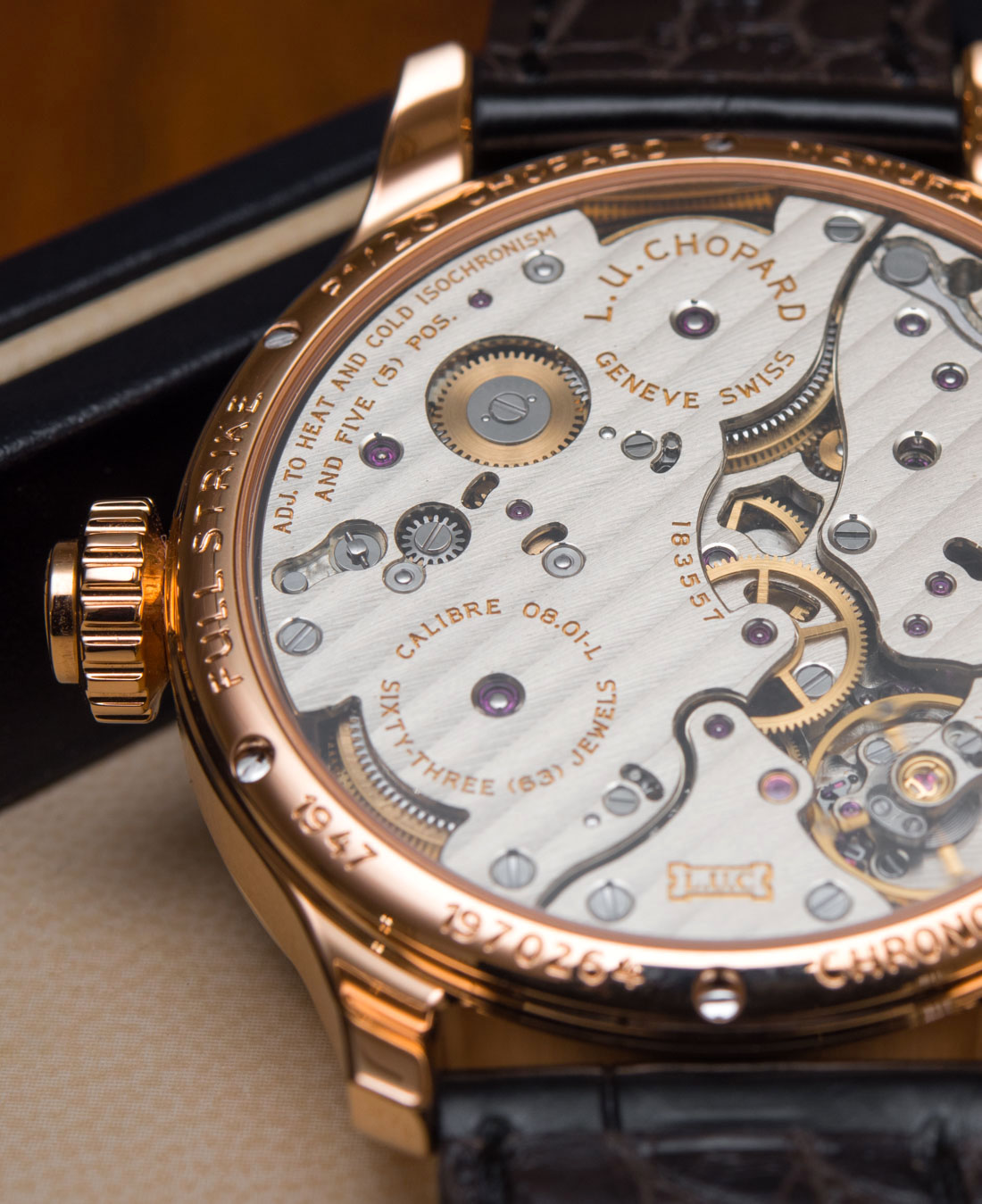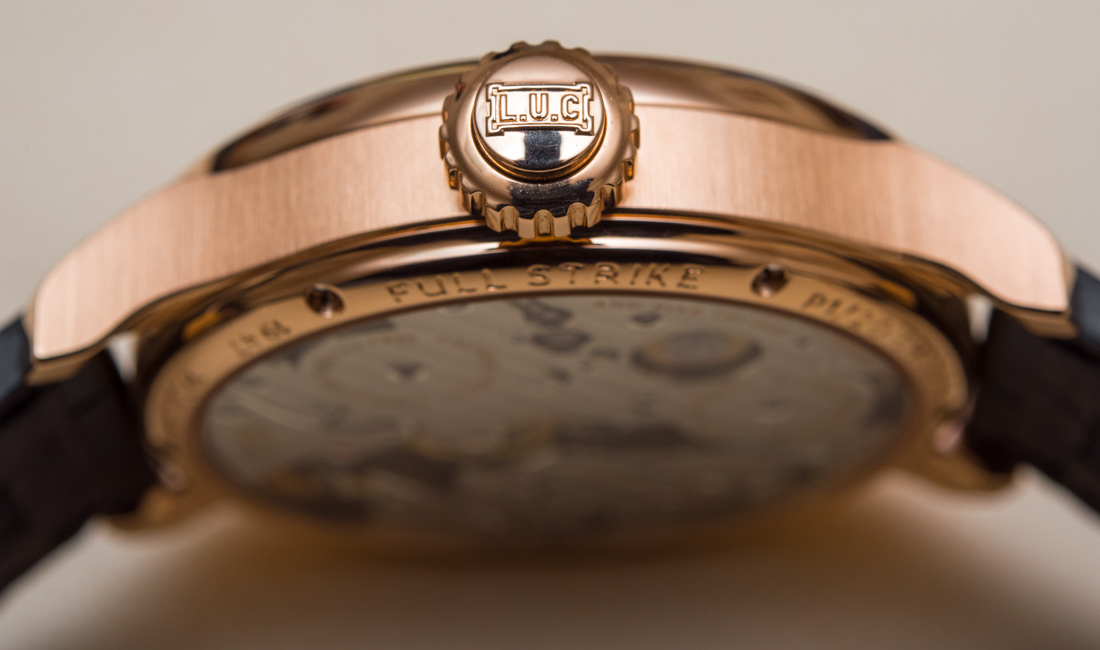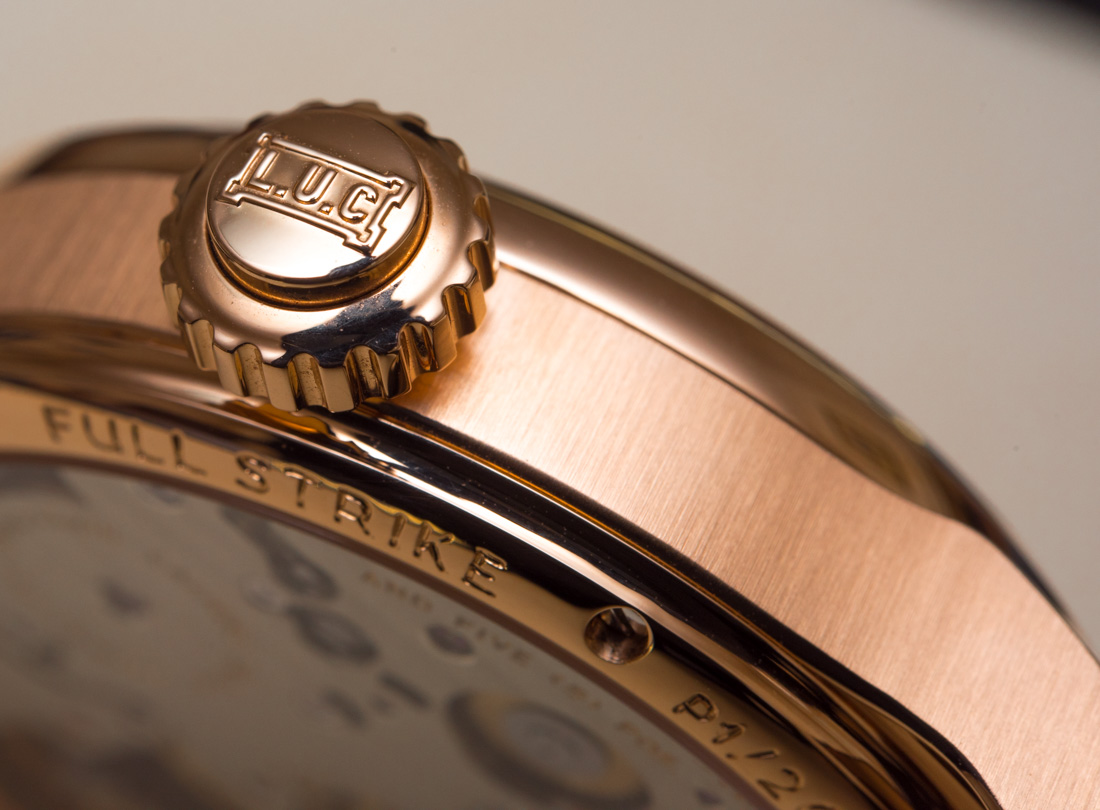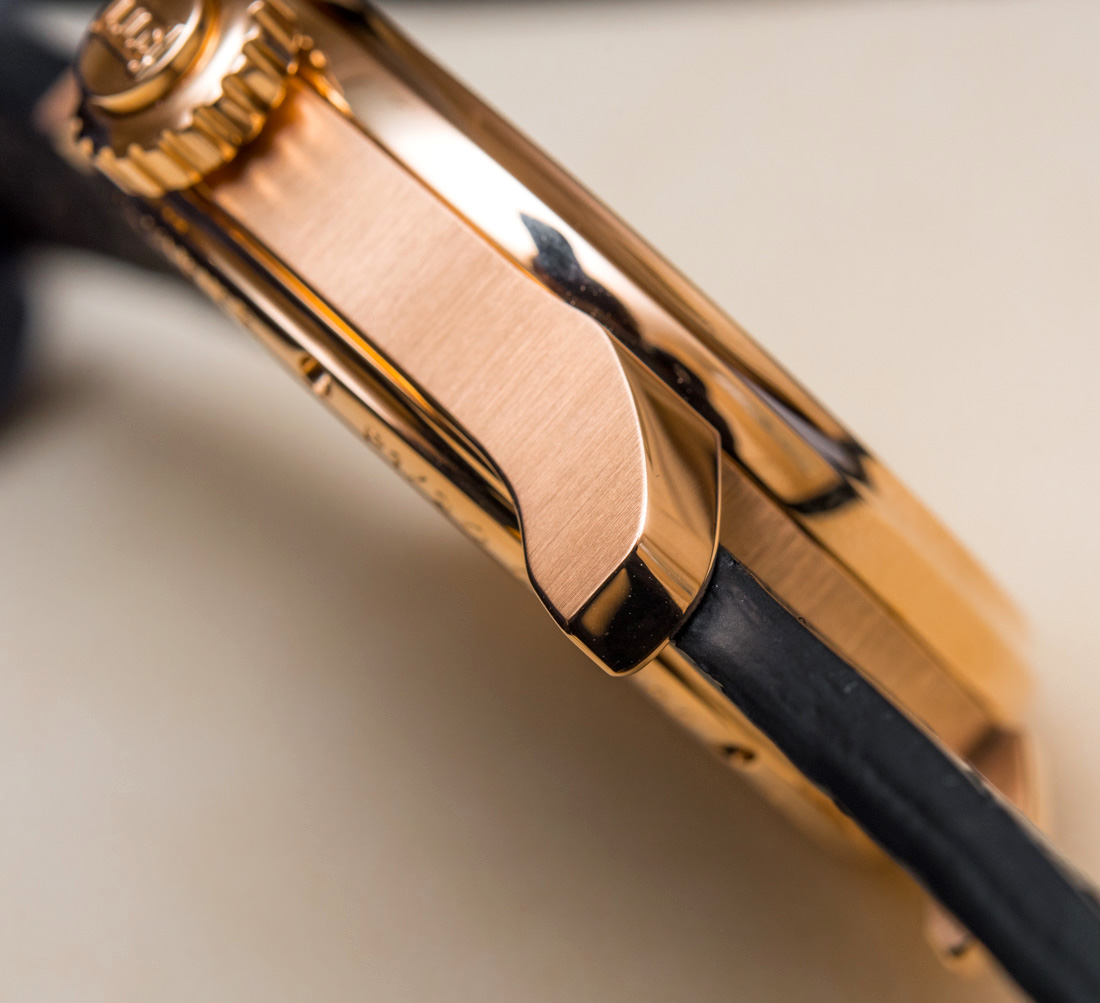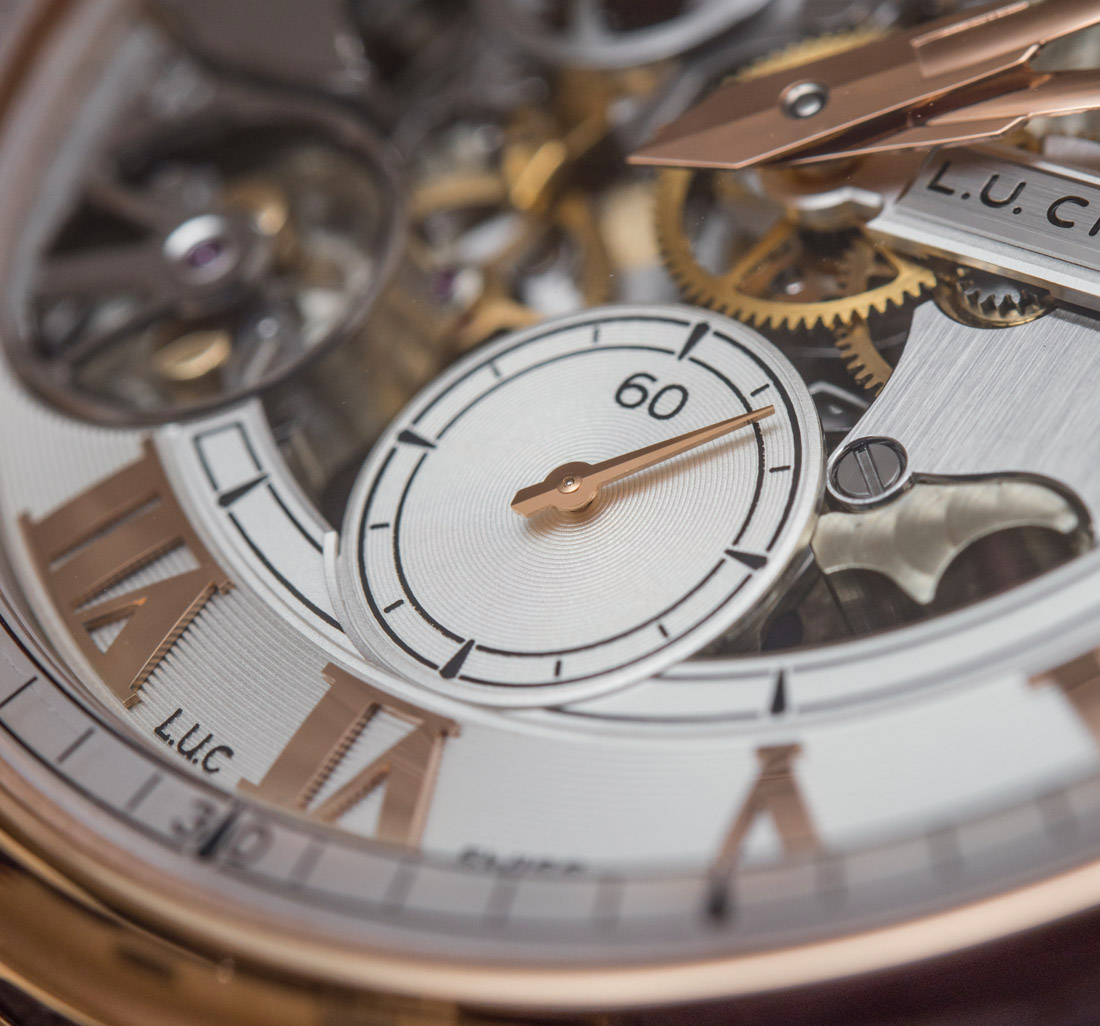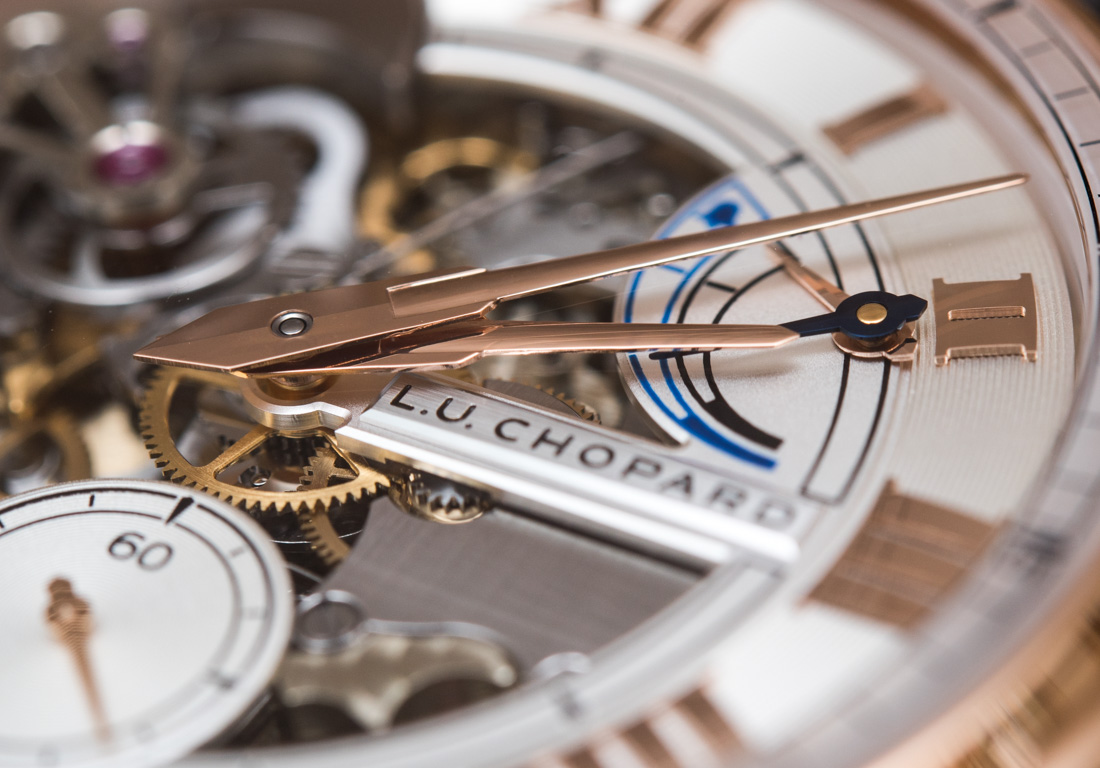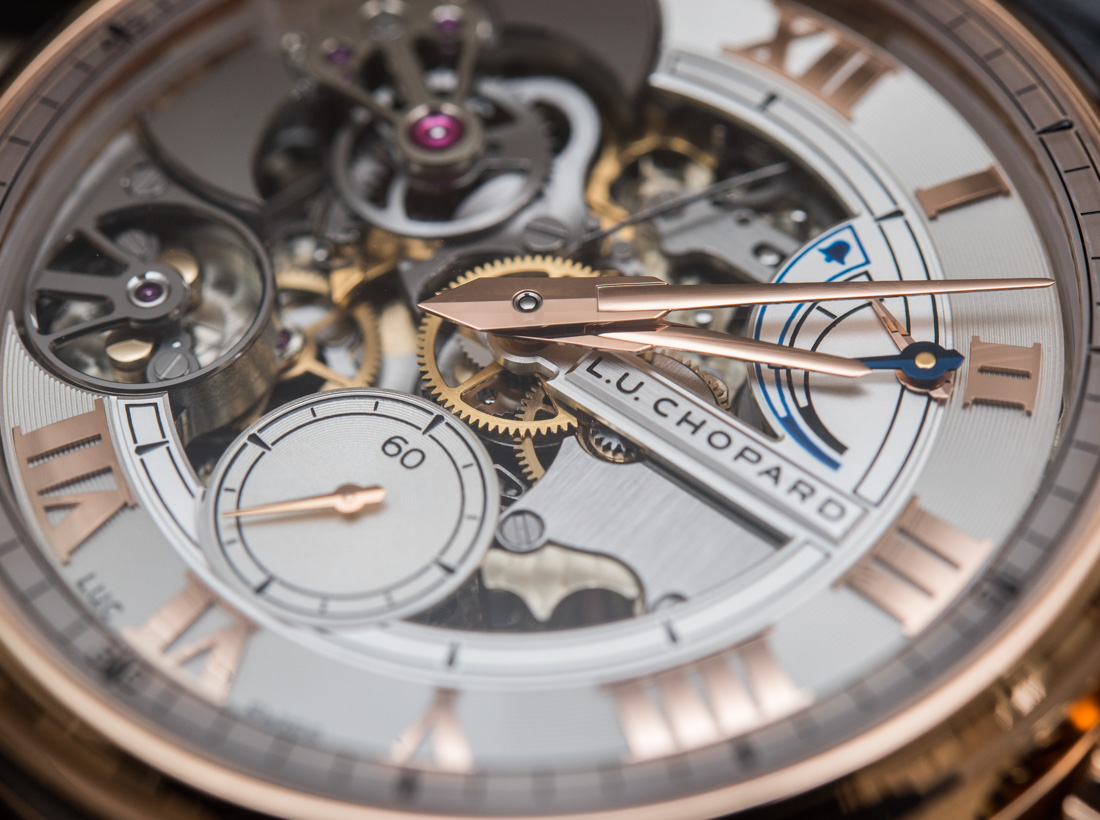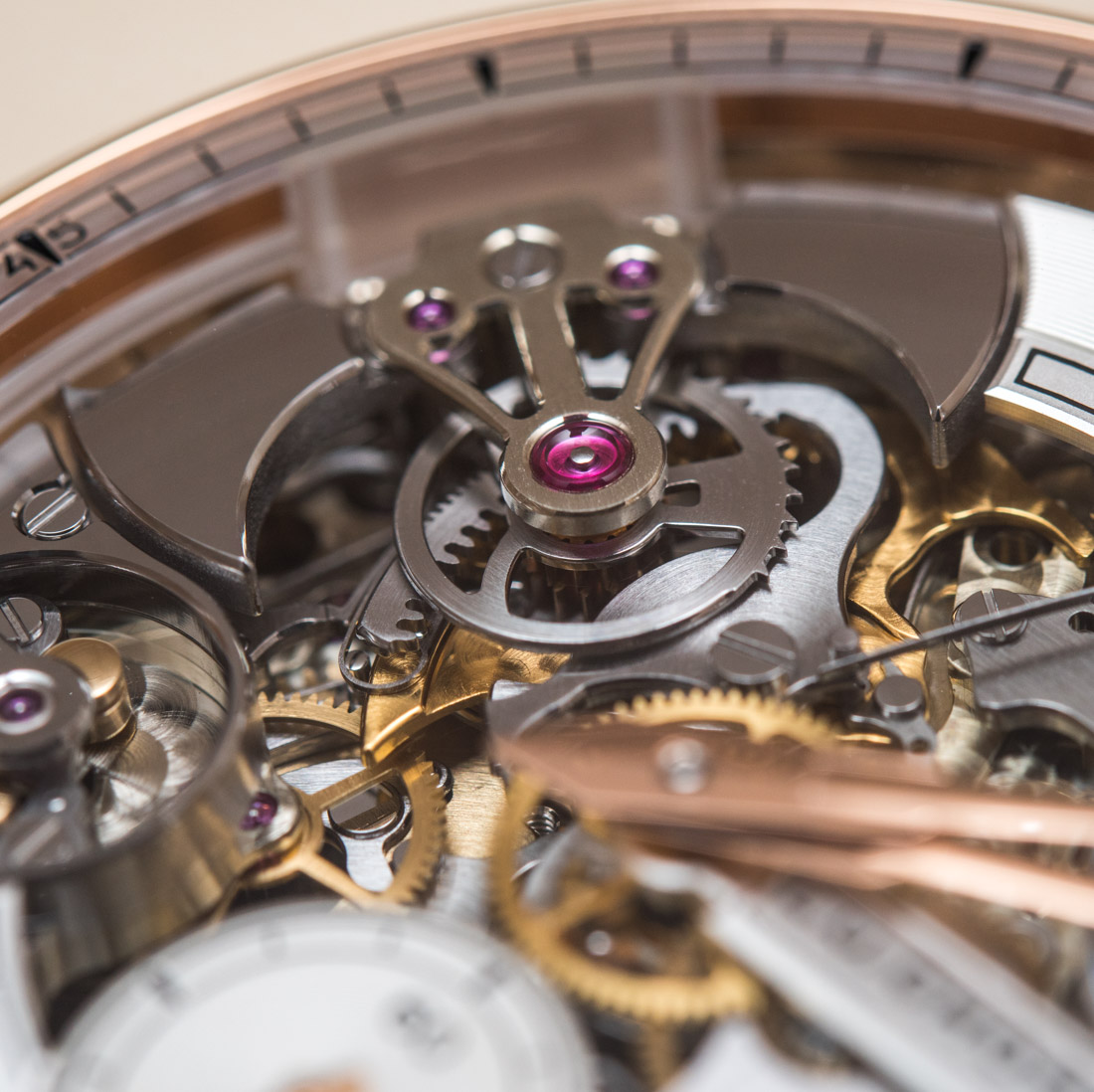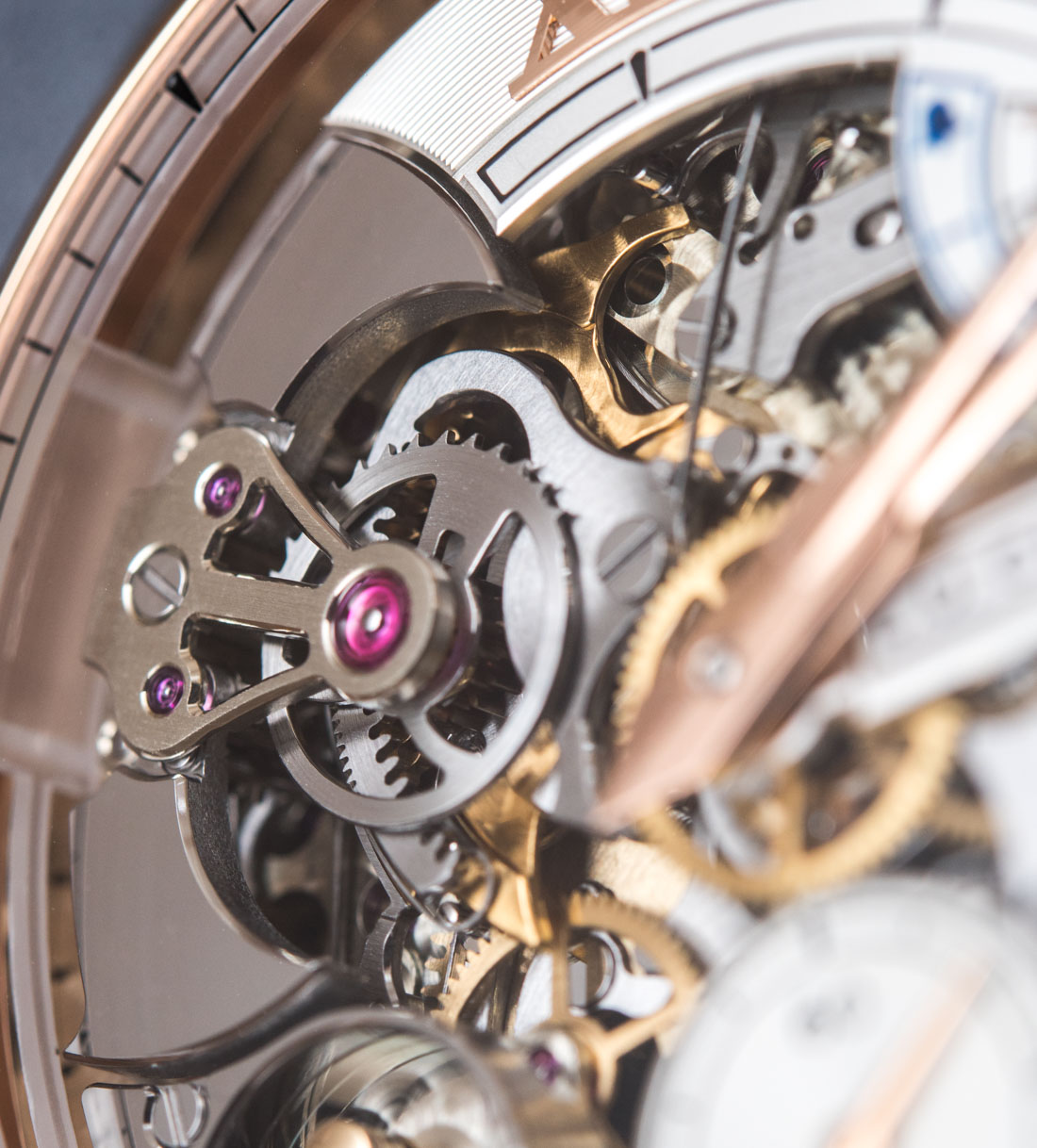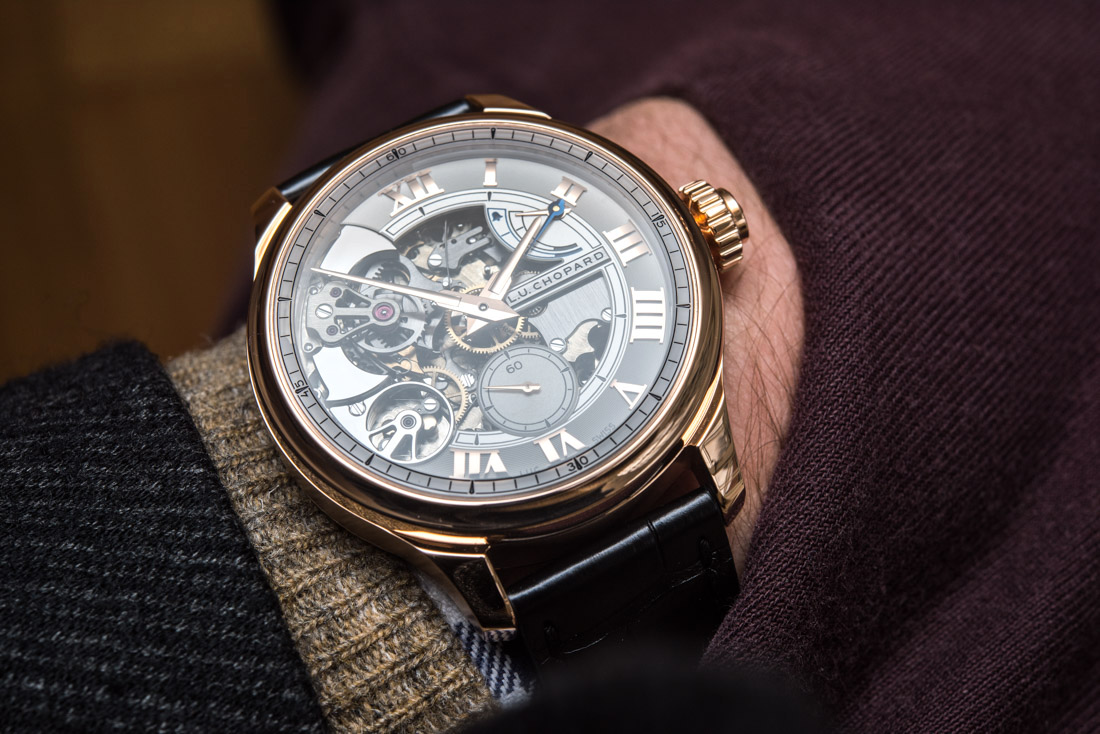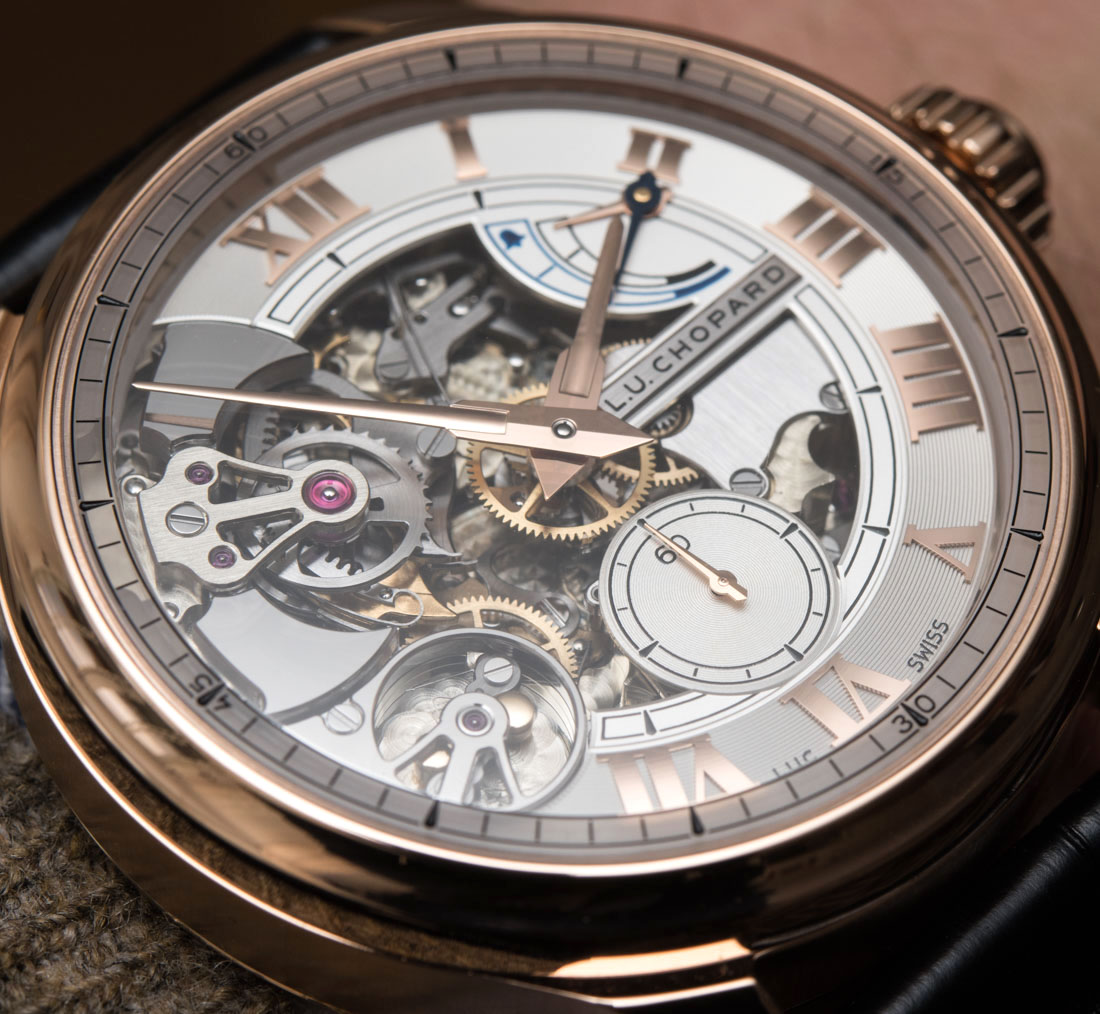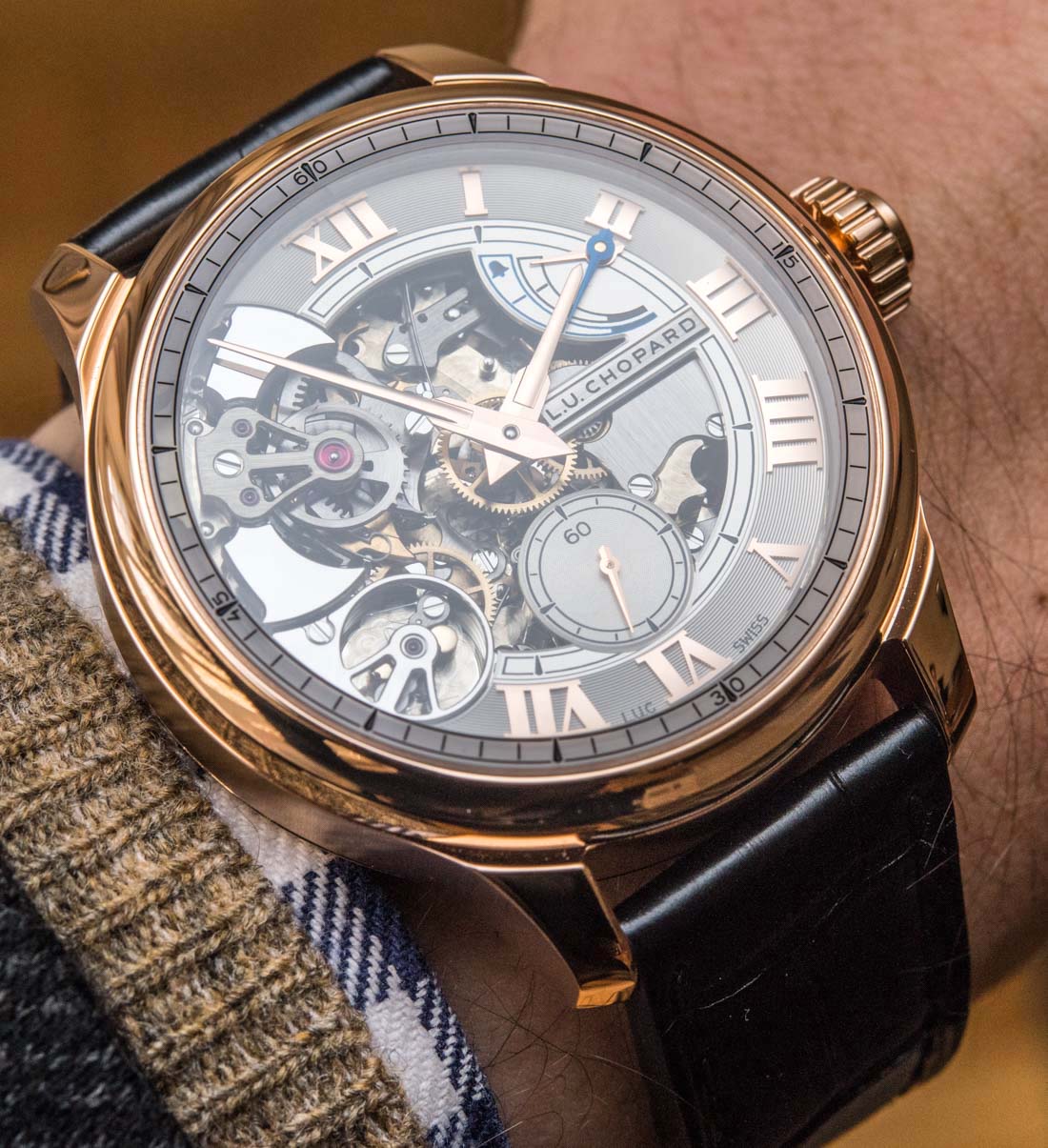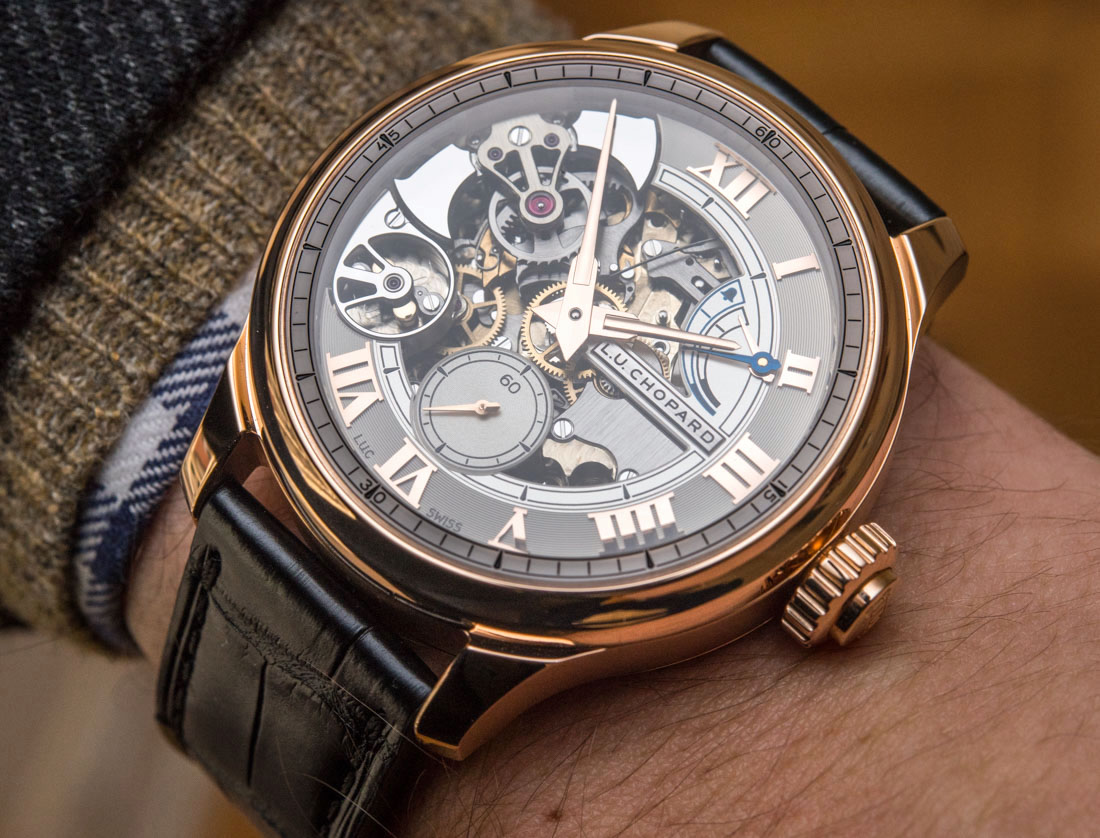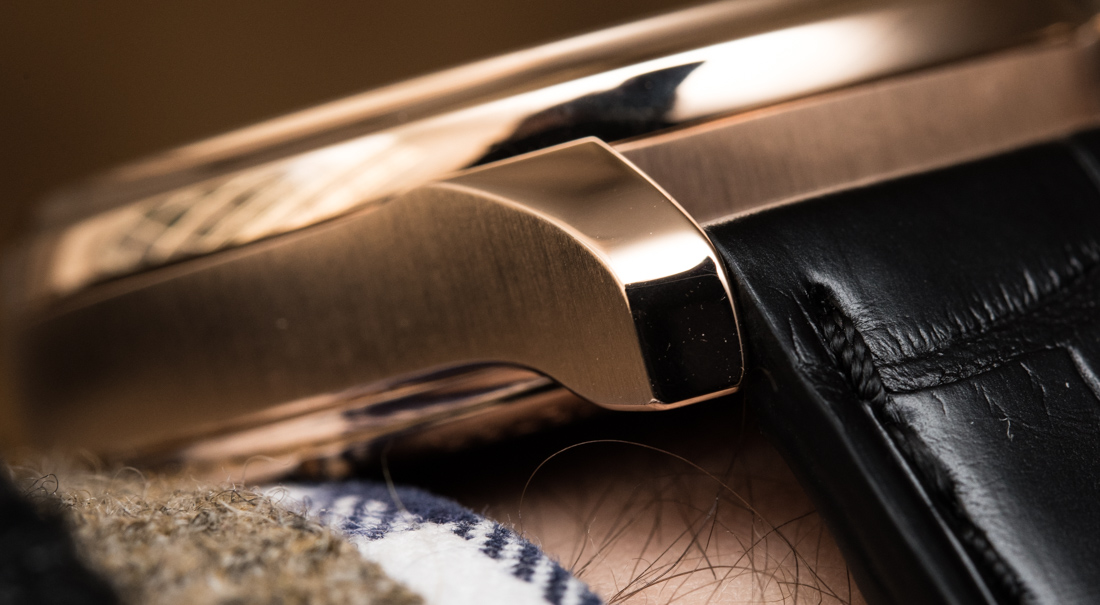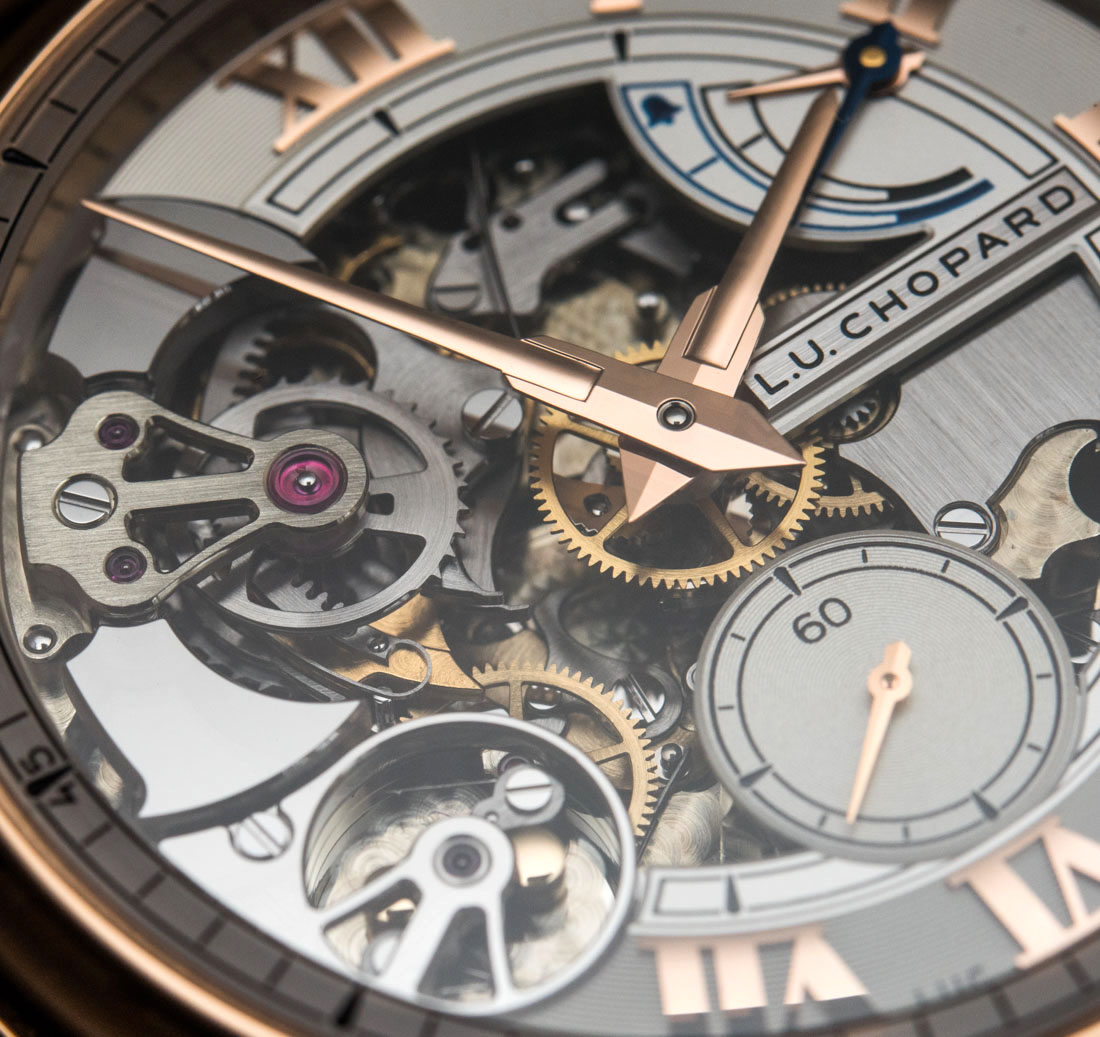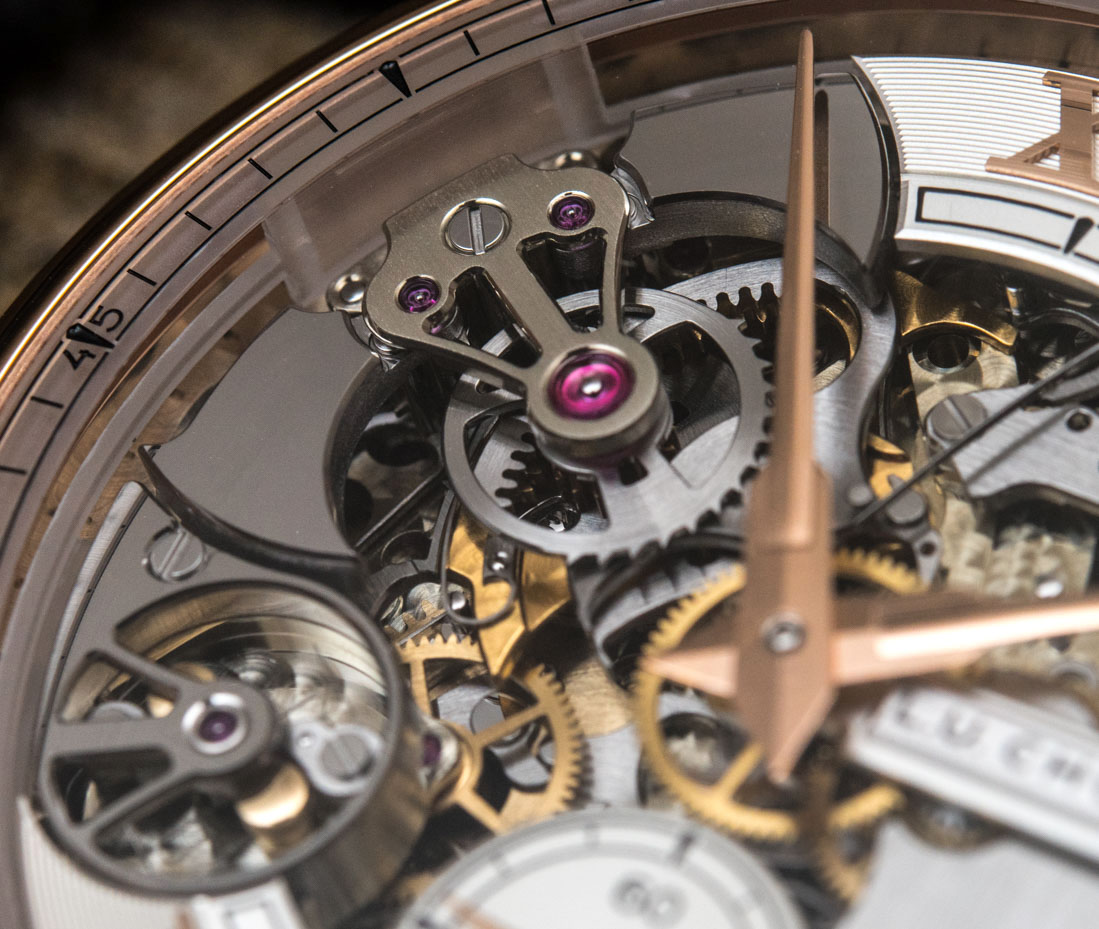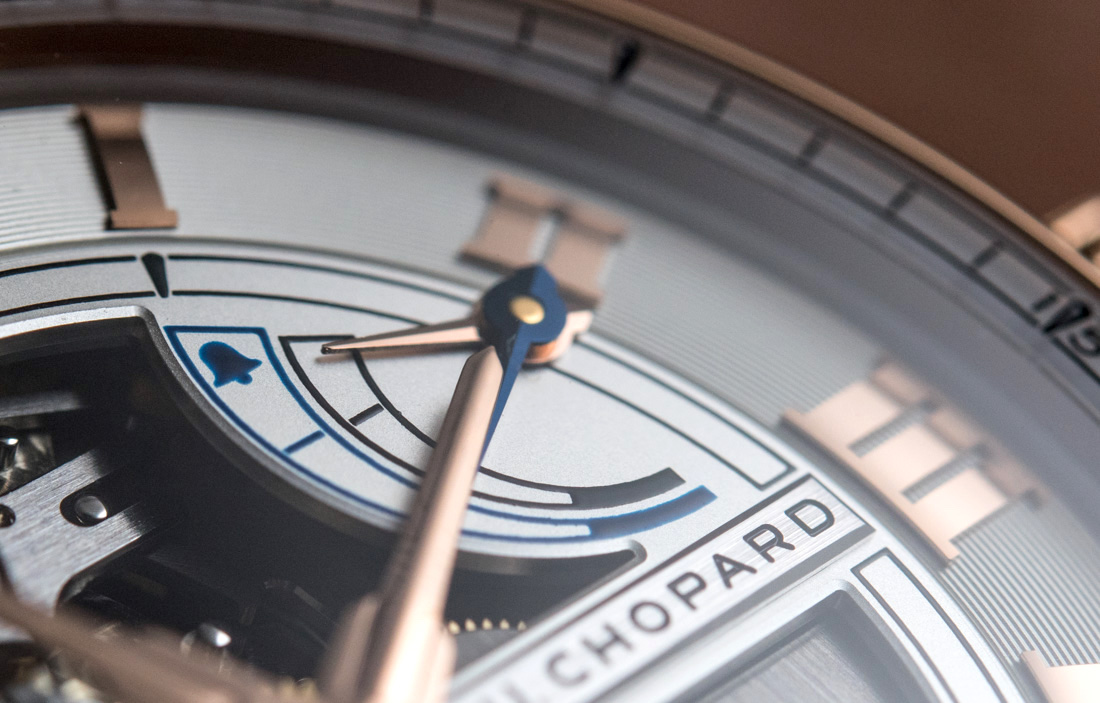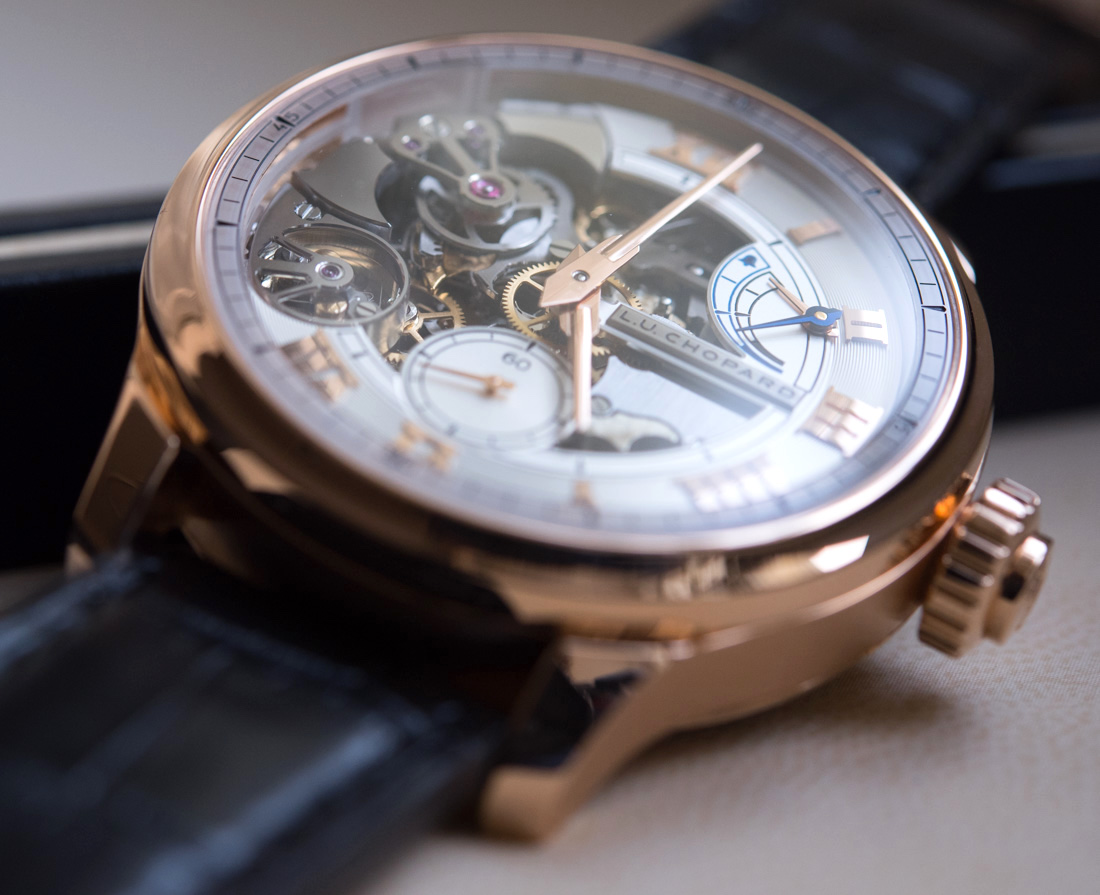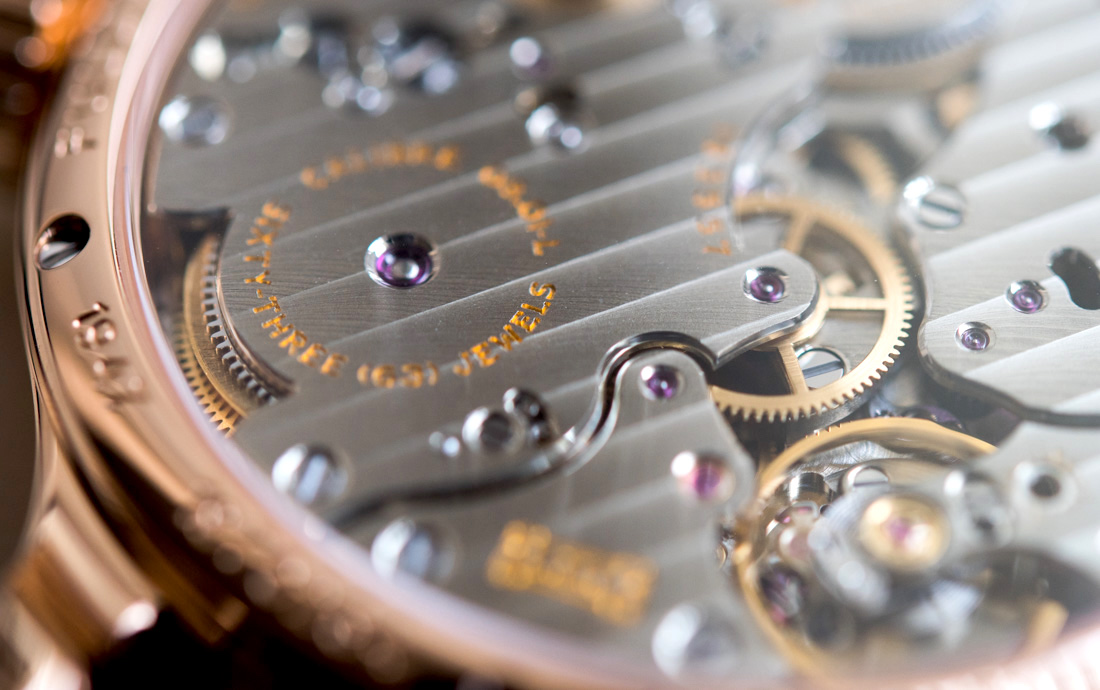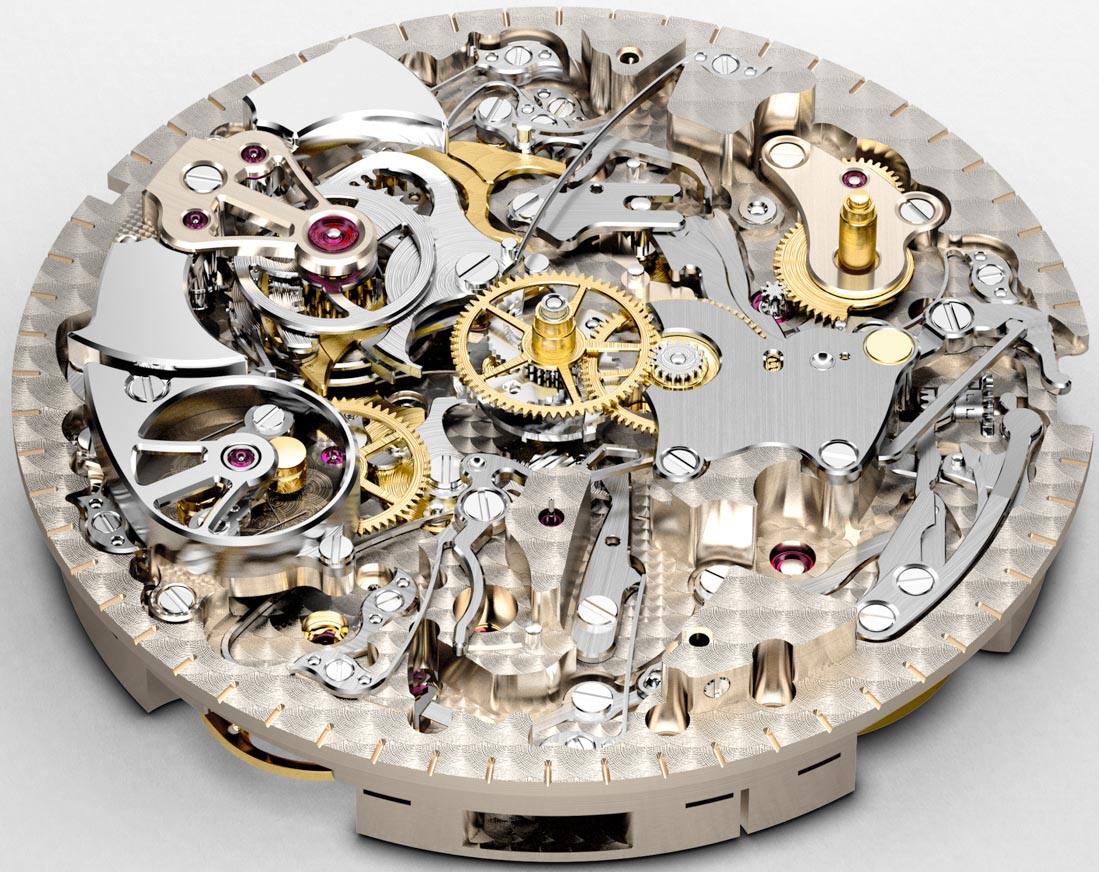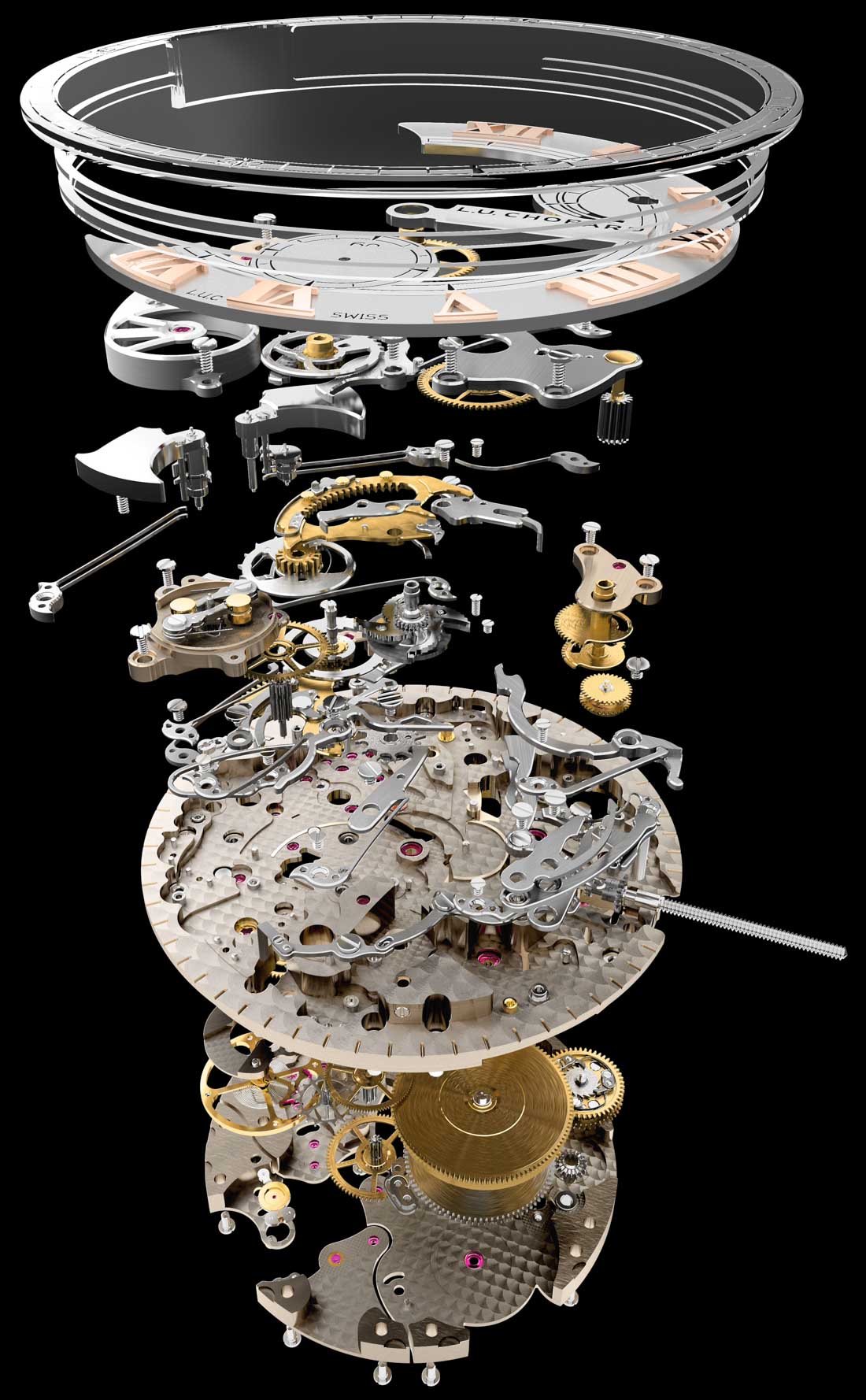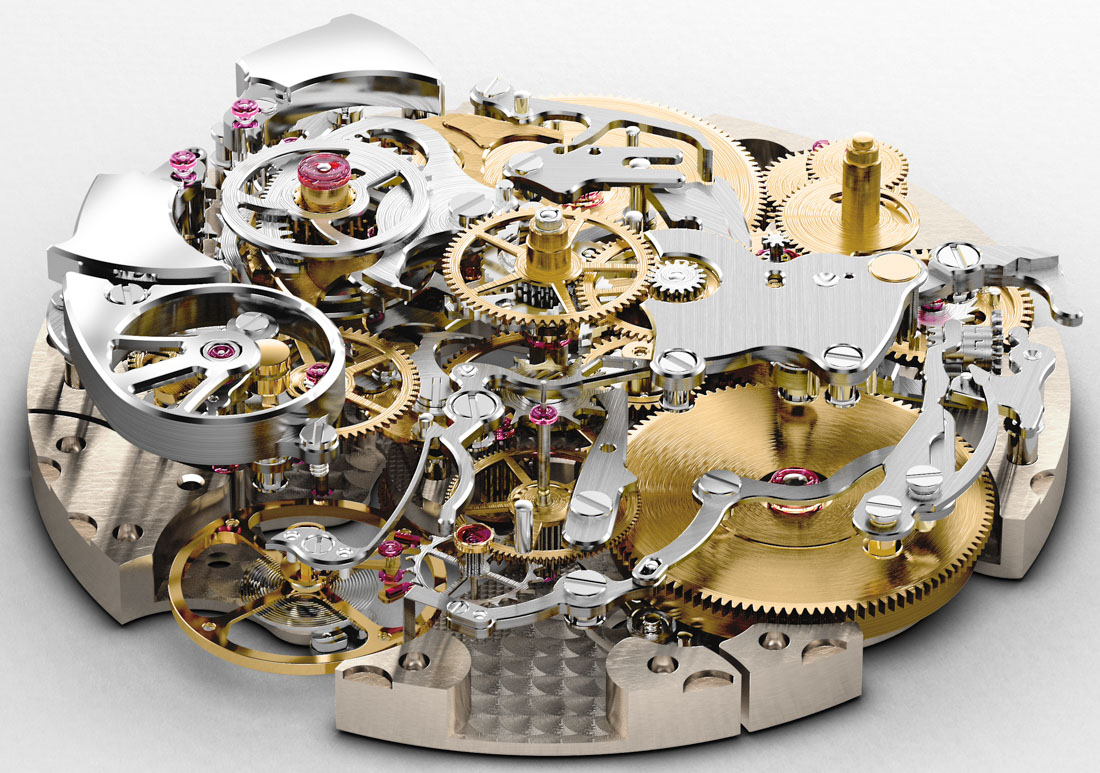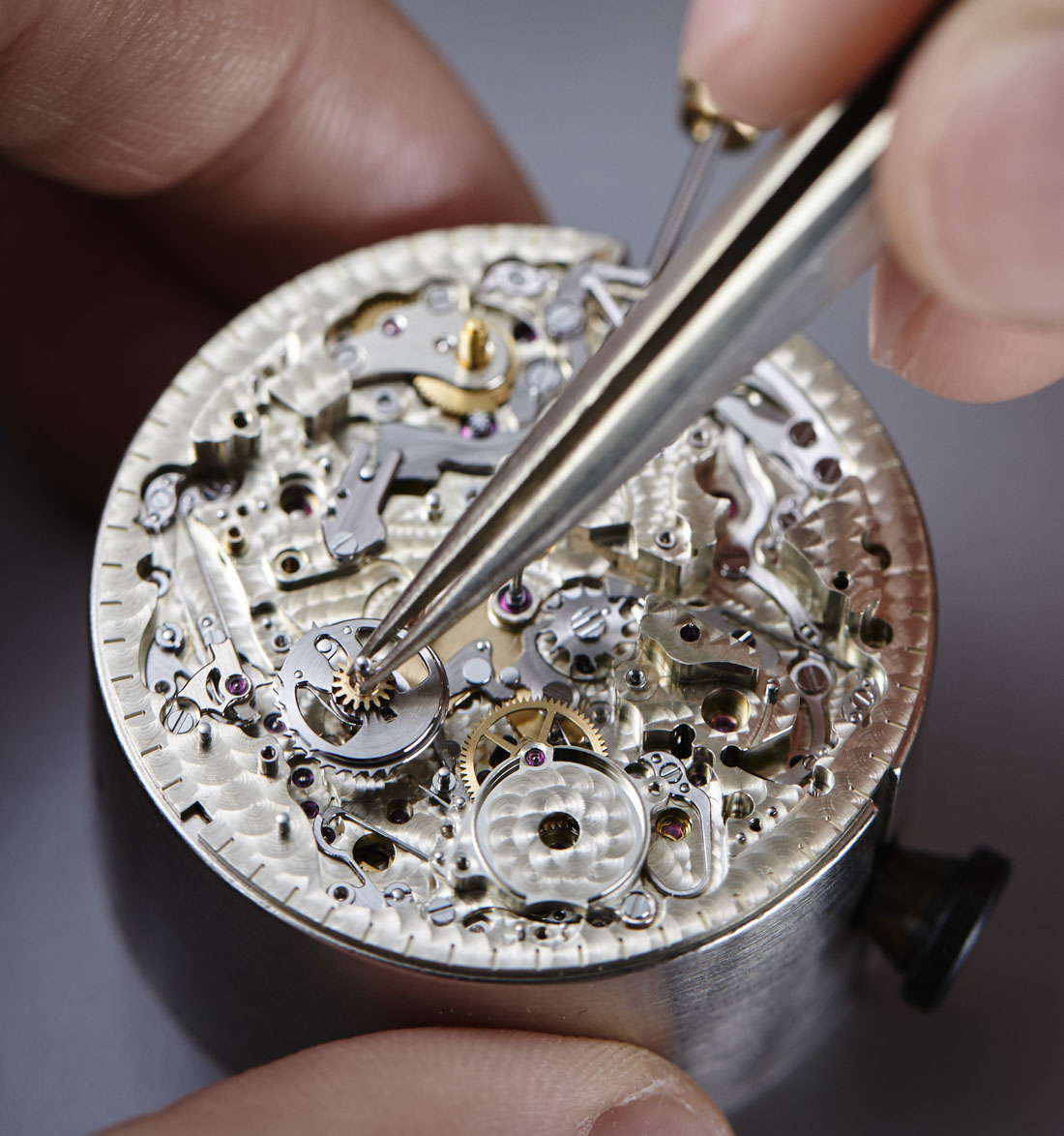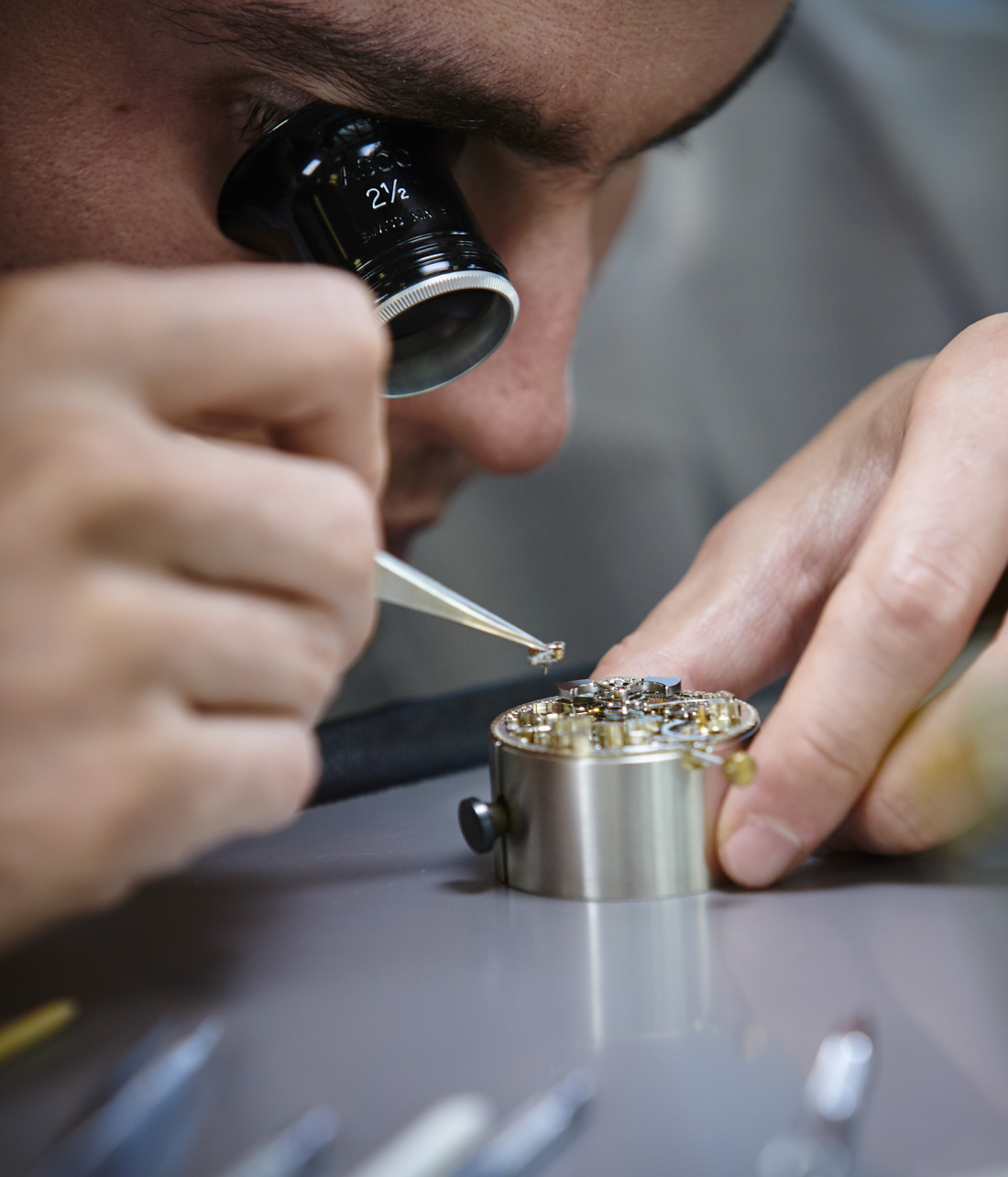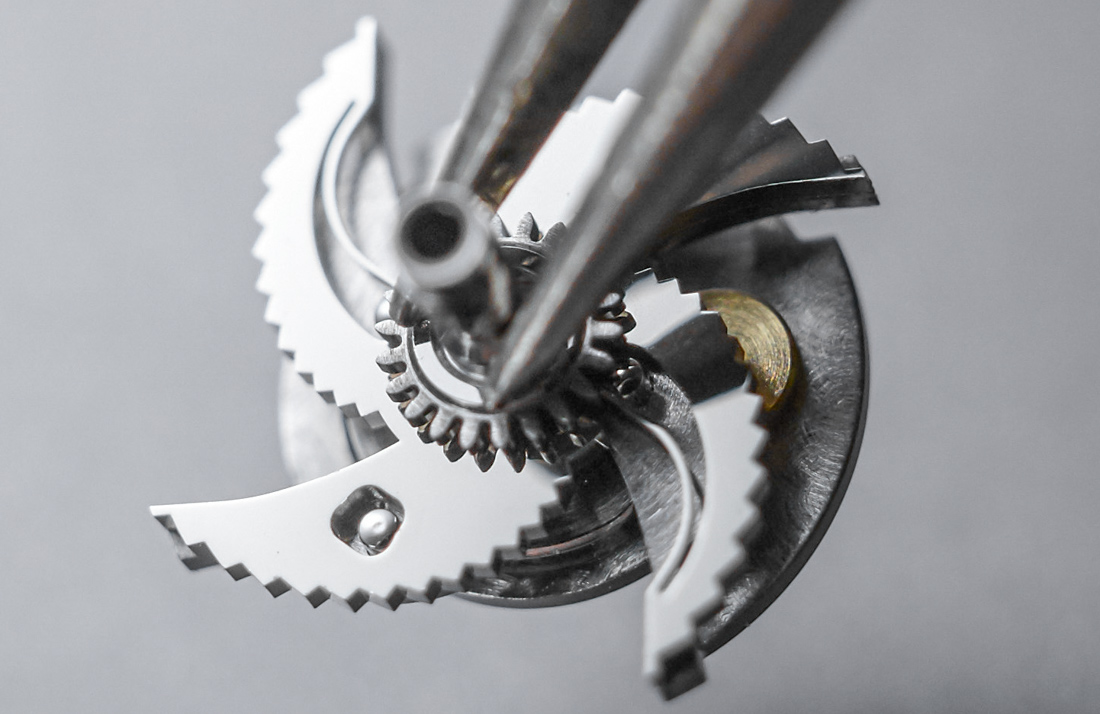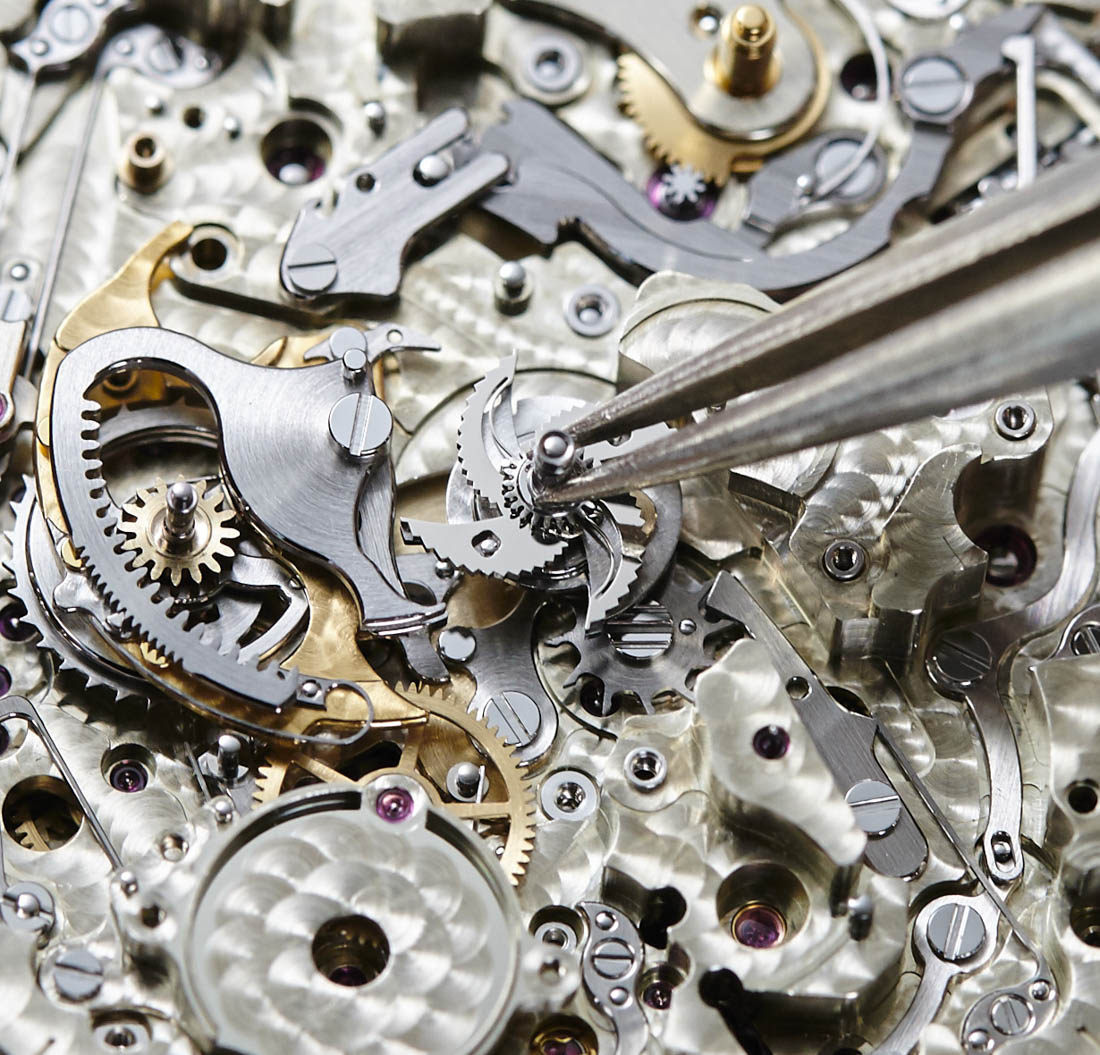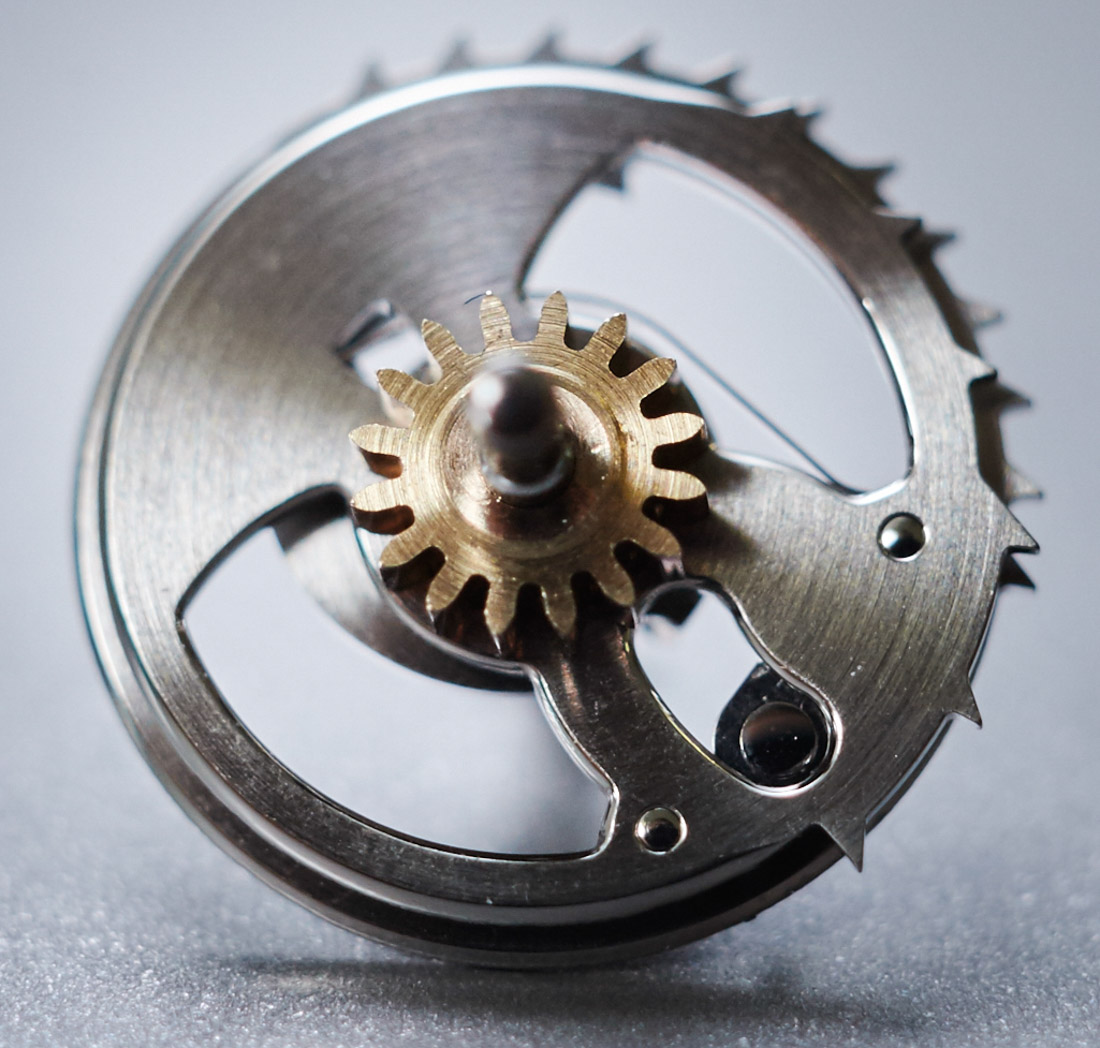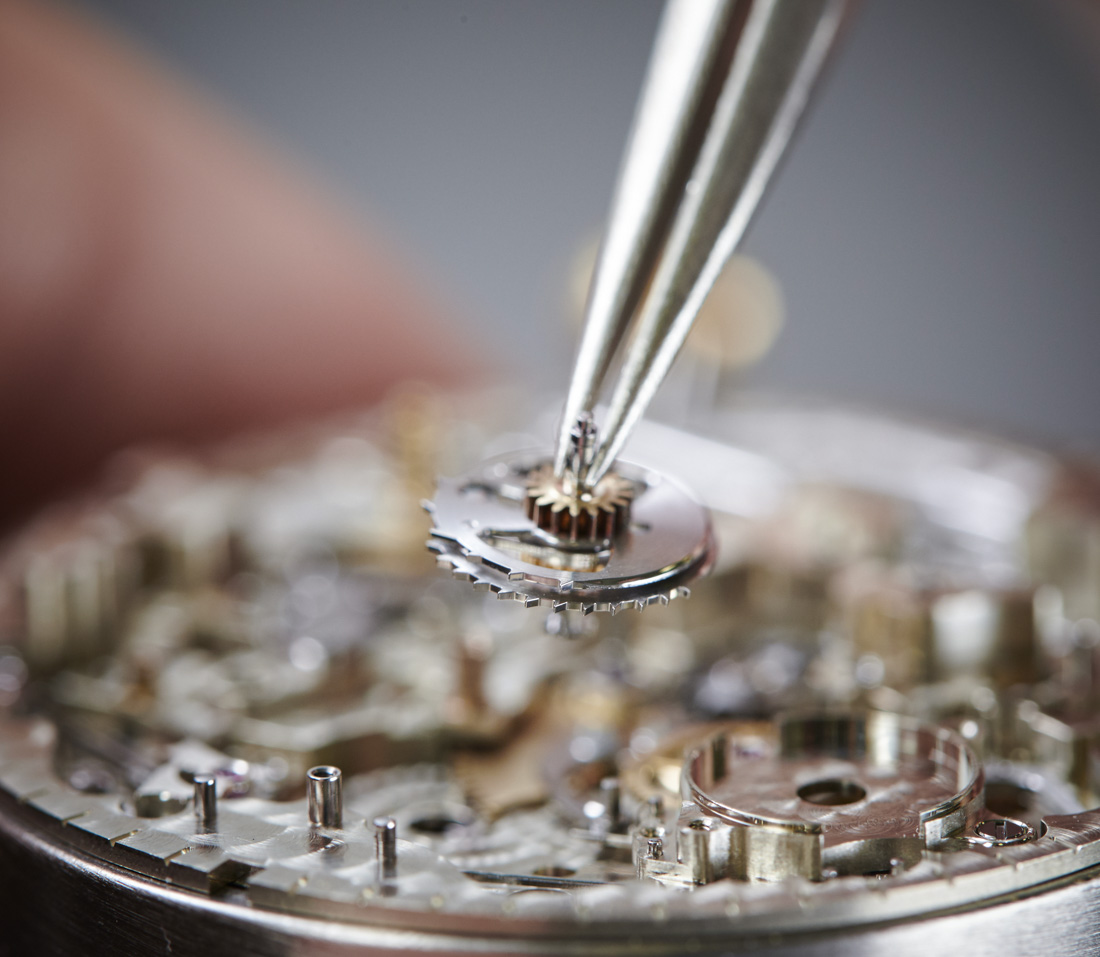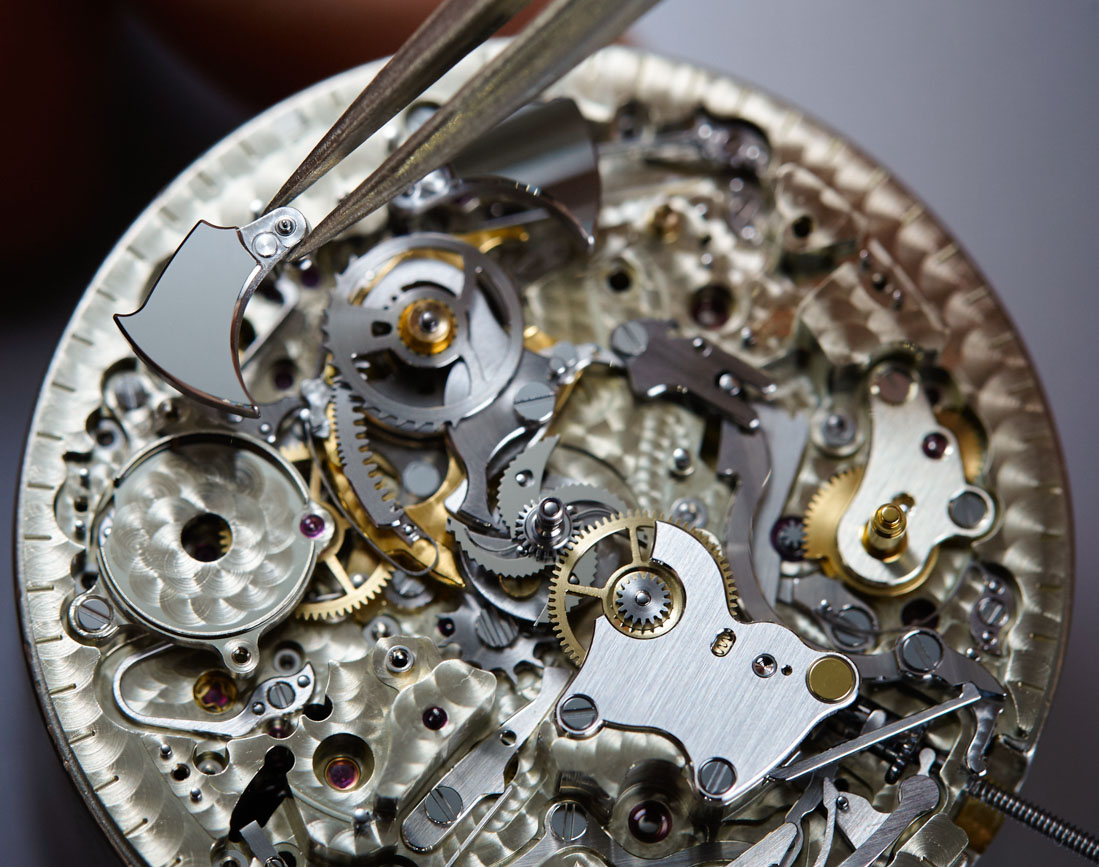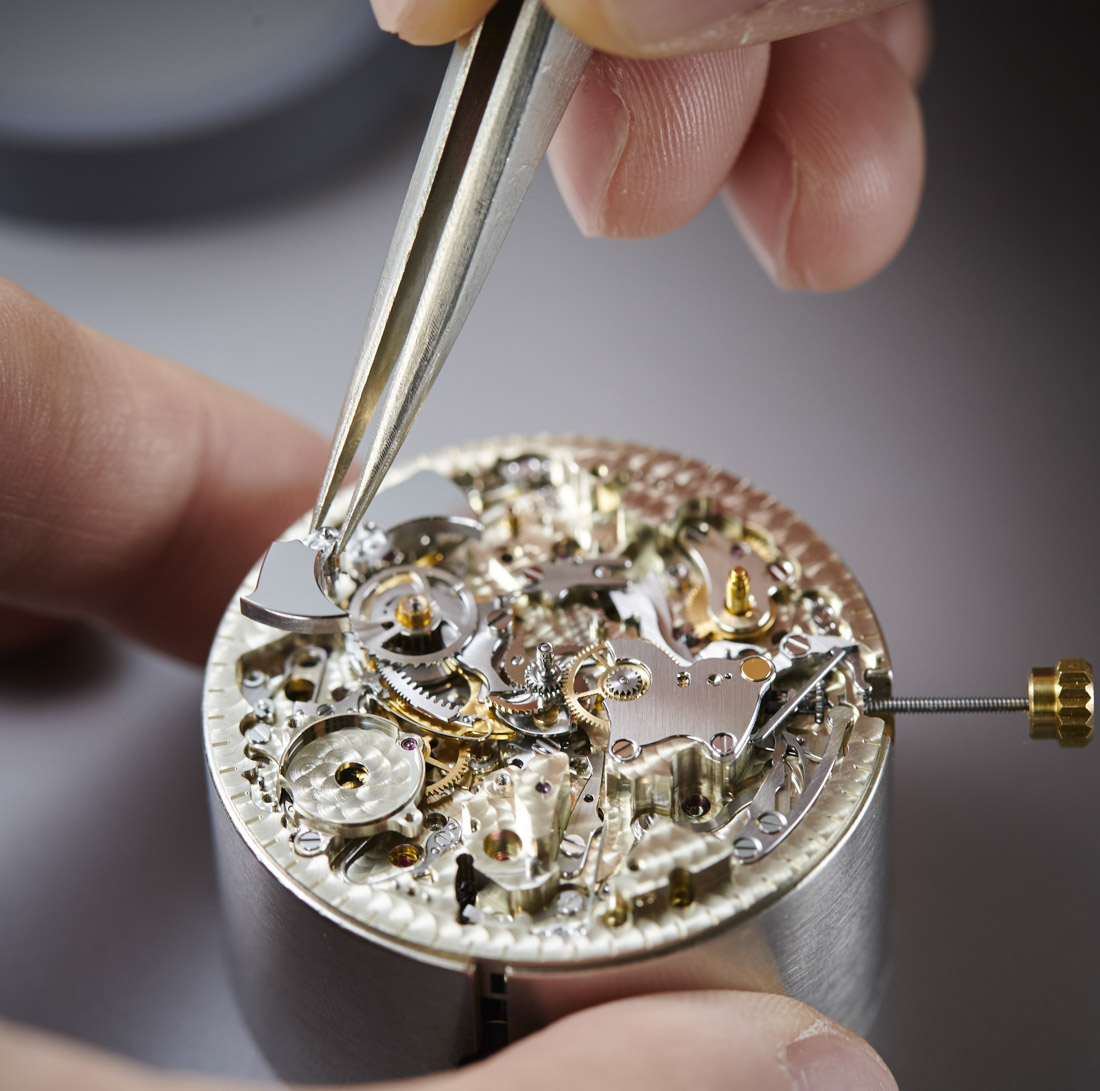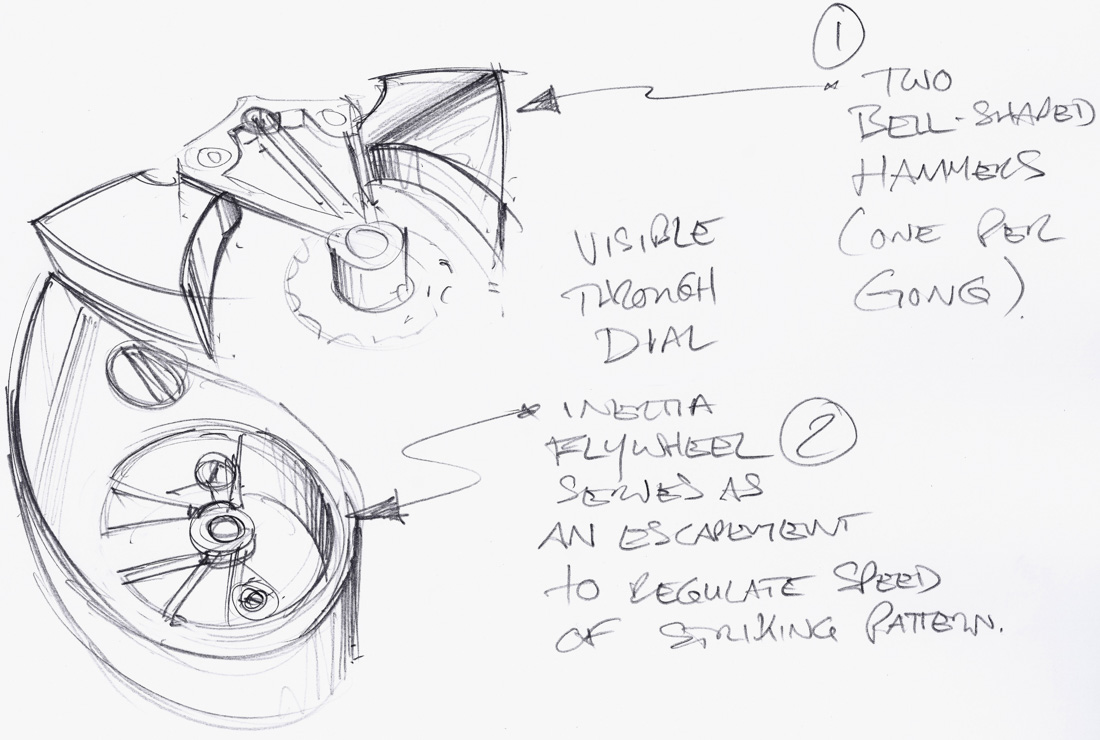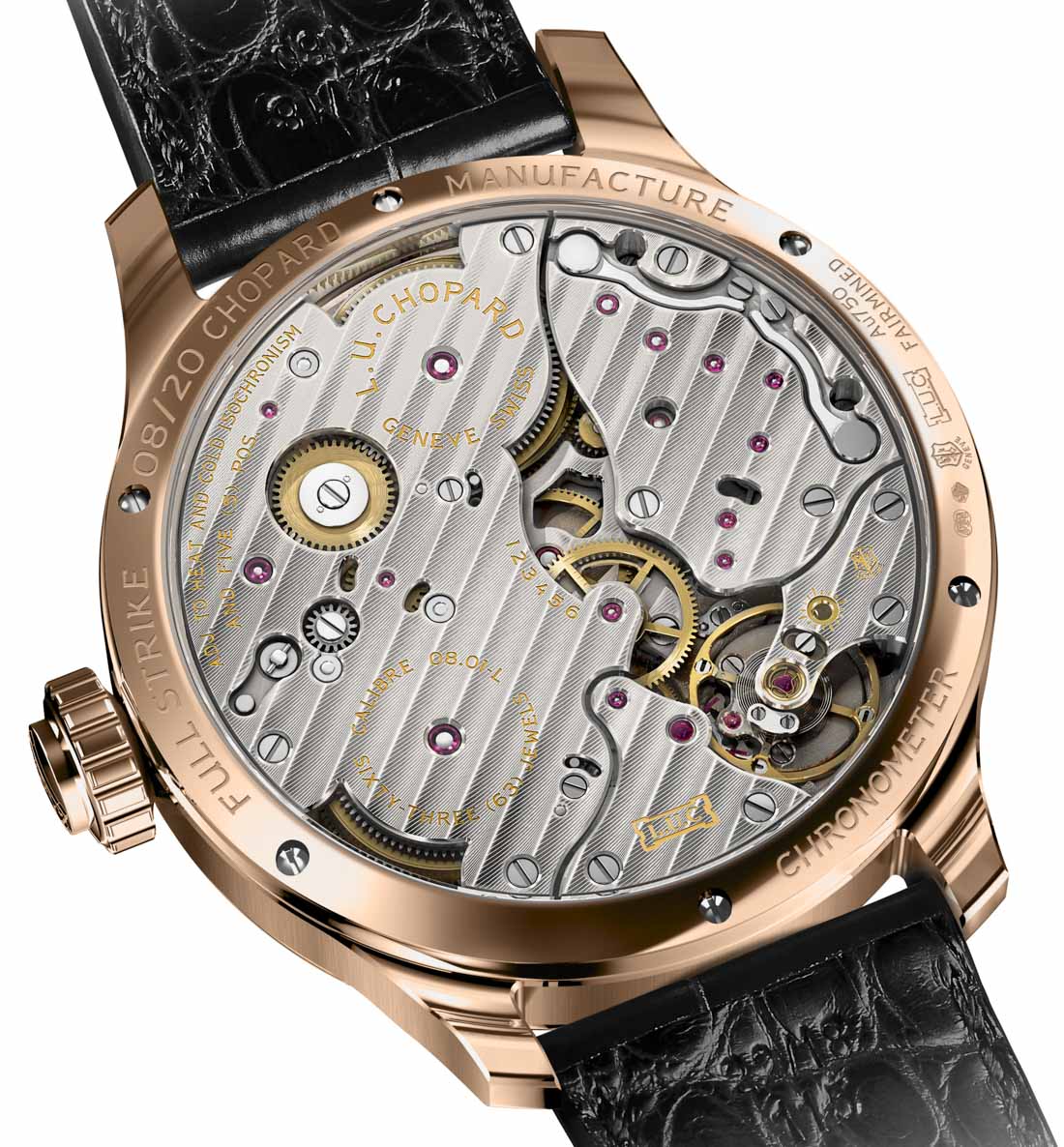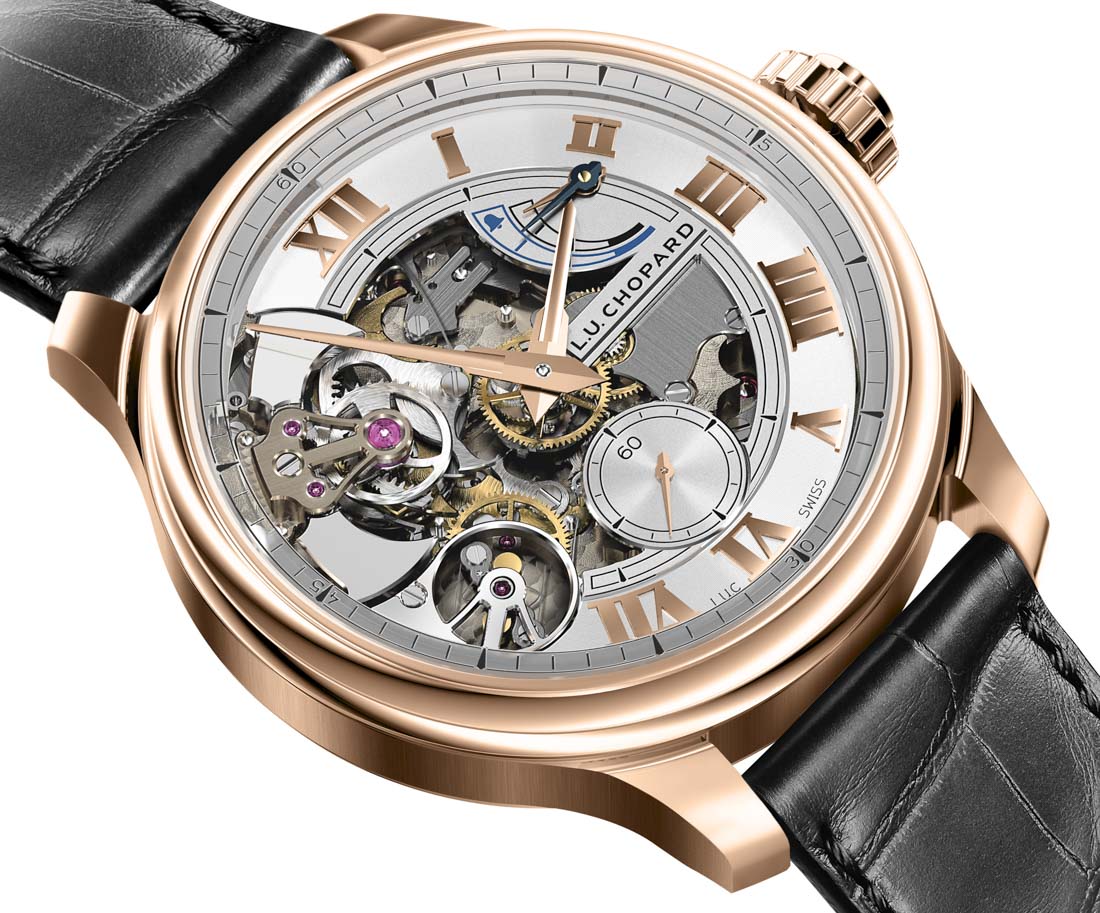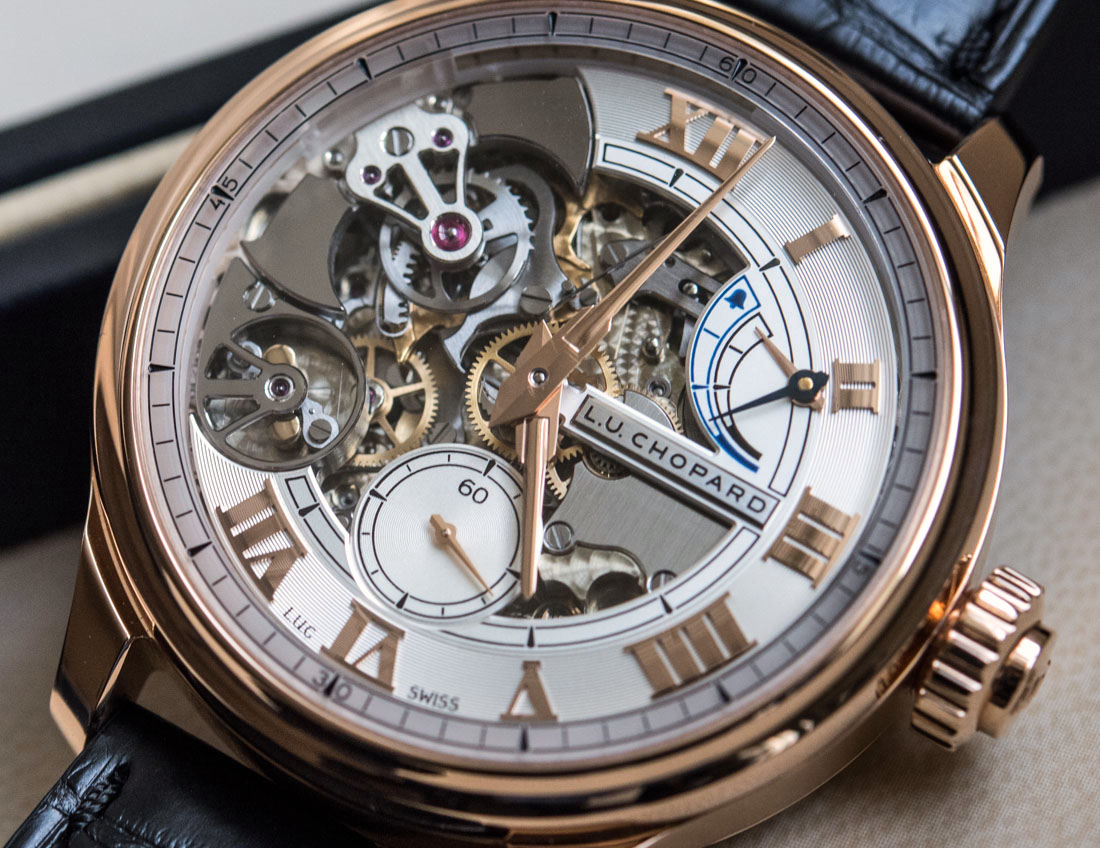
Minute repeaters are extremely fragile mechanisms that have traditionally been easy to break if the wearer/operator was not careful: setting the time or initiating the chime at the wrong moment could, for example, break the mechanism, separating owner and watch for a few weeks (often months) while a repair could be performed. With the minute repeater’s starting mechanism finding its place in the crown itself, I was at first quite worried about accidentally starting the chime when adjusting the time. Fortunately, Chopard L.U.C has addressed these issues by adding three “security devices”: one for when the power reserve would be too low for the repeater to operate; one fitted to the coupling clutch so that the regulator only starts spinning when everything is in place; and a last one that disconnects the chime and its pusher from the movement.
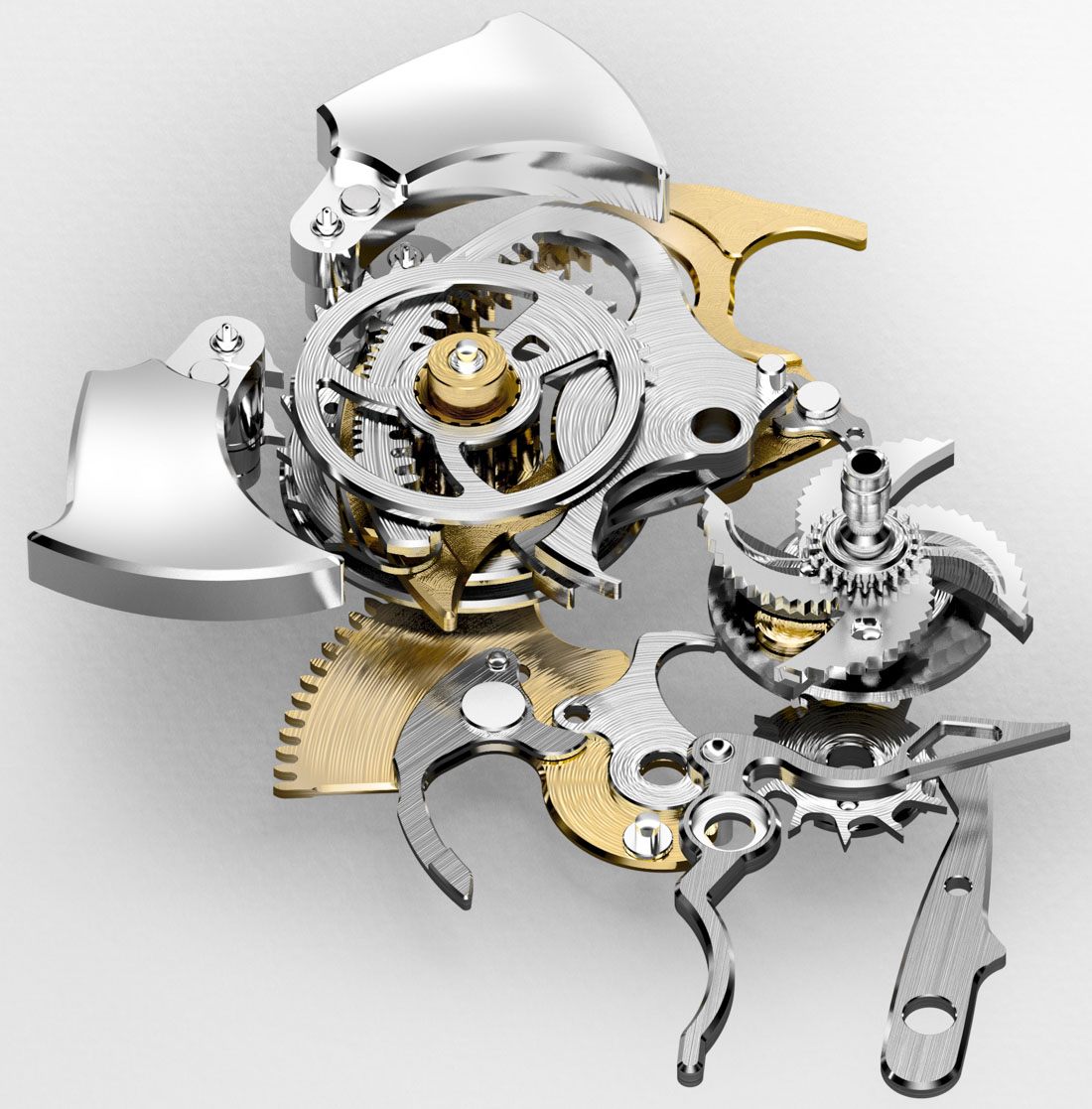
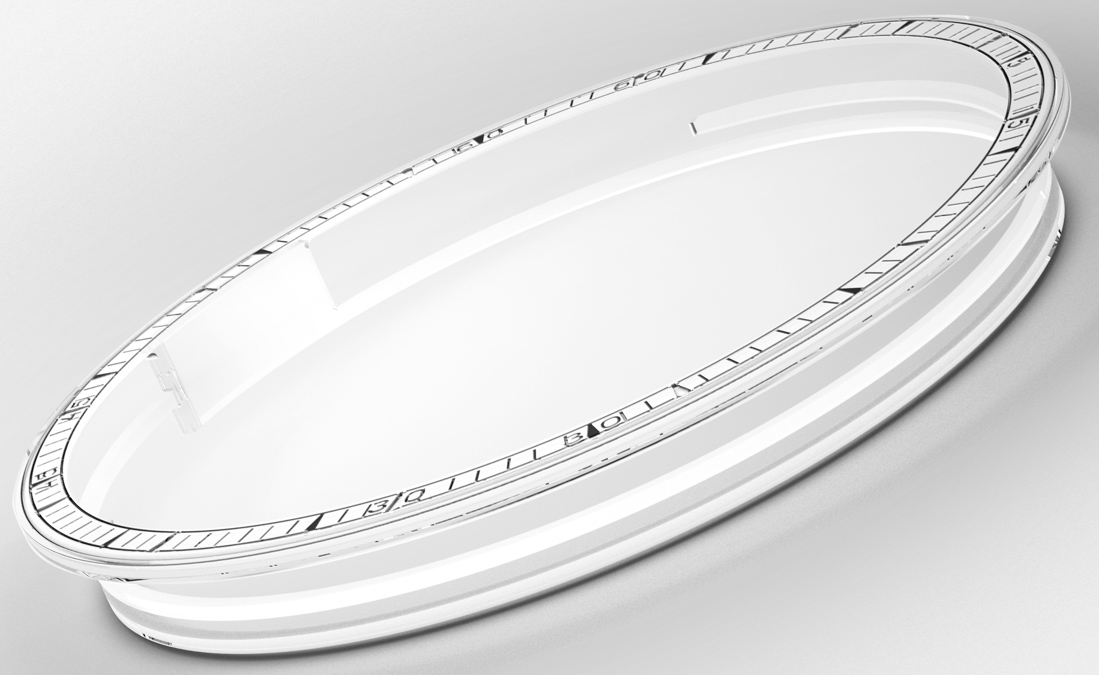
…About That One Patented Component…
The magic happens thanks to not only how the hammers strike, but what they strike at: the first minute repeater gong not in metal but in sapphire. “Darn it, sapphire is used for everything (and I mean, everything) in high-end watches, so how is this new?” I was thinking to myself, looking for an explanation.
Chopard has done what a few have done before (like Jaeger-LeCoultre here or Breguet with the 7087) and engineered the case and movement in a way that would use the sapphire crystal as a resonator, sort of like the membrane in a loudspeaker to amplify and enhance the sound of the repeater. Where Chopard’s approach is entirely unique and new in watchmaking history is that they have created a sapphire crystal that itself is being struck by the hammers: there are no metal gongs connected to the front glass, but instead the hammers strike the extra, lowered edge of the crystal itself.
The sapphire crystal has a complex shape that, in simple terms, is like a bowl with some cut-out strips running around its lower levels. The hammers strike these strips of sapphire (well, gongs) and the resonance runs through the entire crystal which in turn acts, again, like a membrane, resulting in a sound that is absolutely incomparable to any other minute repeater, sonnerie, or hourstriker we have ever heard. The key is that the sapphire is just one solid piece, there are no glued, welded or otherwise joined pieces – just one solid, complex shape.
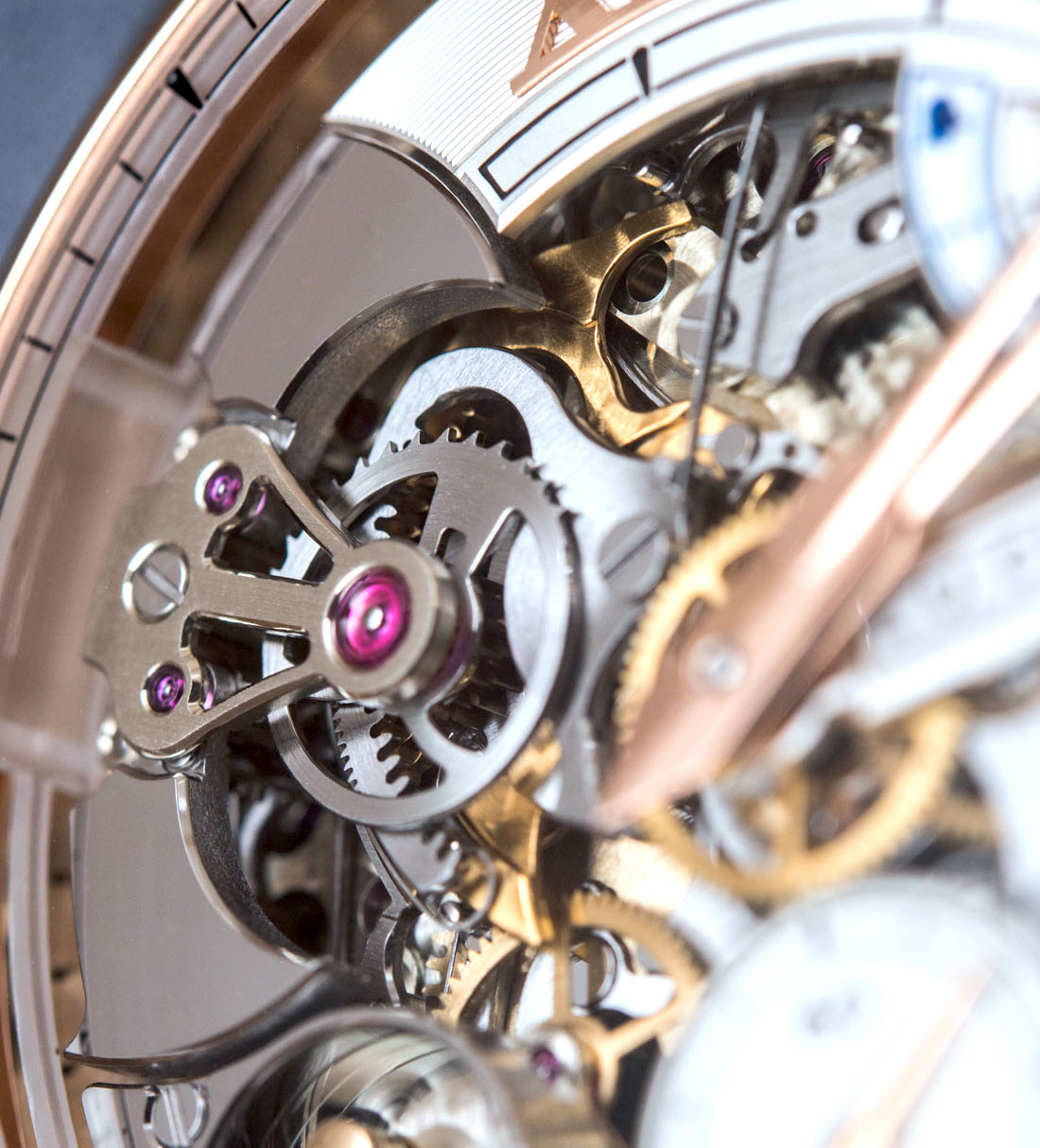
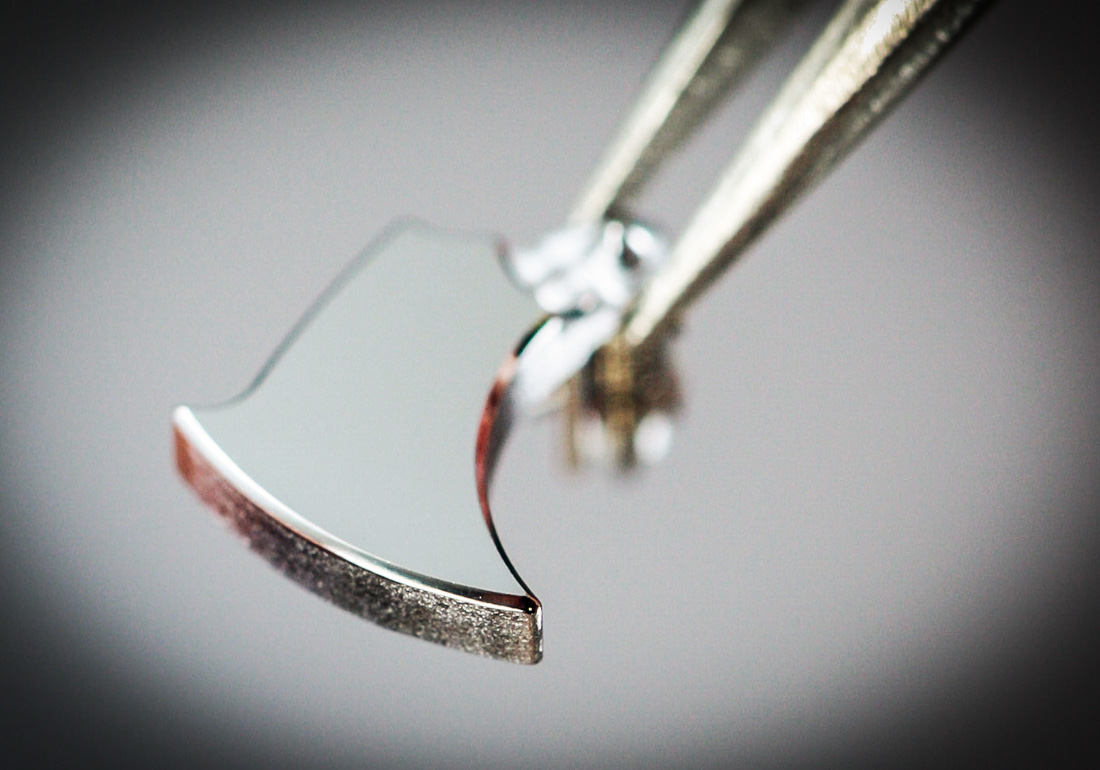
Chopard says that they have tested the crystal for over 1.5 million hammer impacts to check for fatigue or cracks in the material and they conclude by saying: “it does not break.” Well, we’ll have to take their word for it – and that of science, and sapphire manufacturers who say that the material is extremely prone to cracking while being machined but is remarkably stable afterward.
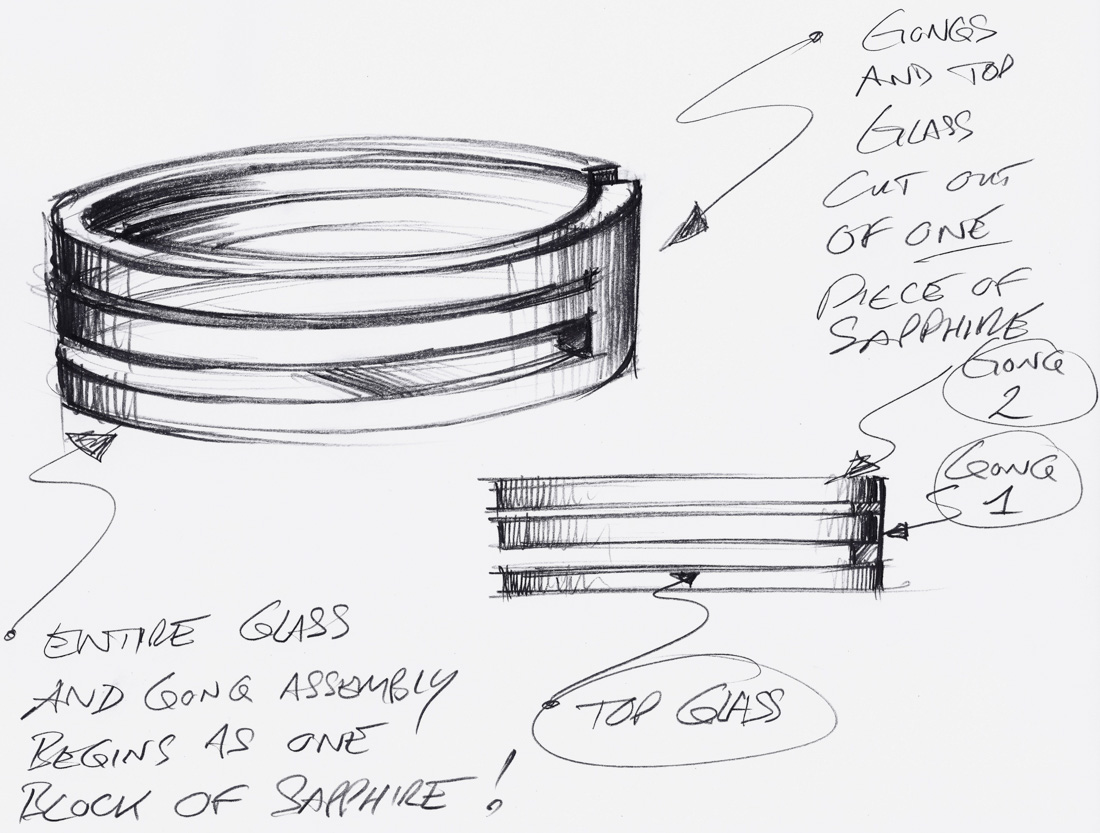
The corollary of sapphire’s hardness is the extreme difficulty involved in working with it, a story we have heard a few times now that sapphire crystal-cased watches are gaining popularity. Again, Chopard says that “machining such a tiny set of parts in such a hard material, without breaking the connection between the gongs and the watch glass, called for tools that are both powerful and accurate. Machining the gongs/glass set alone required more than three years of development, representing a major technical and human feat.”
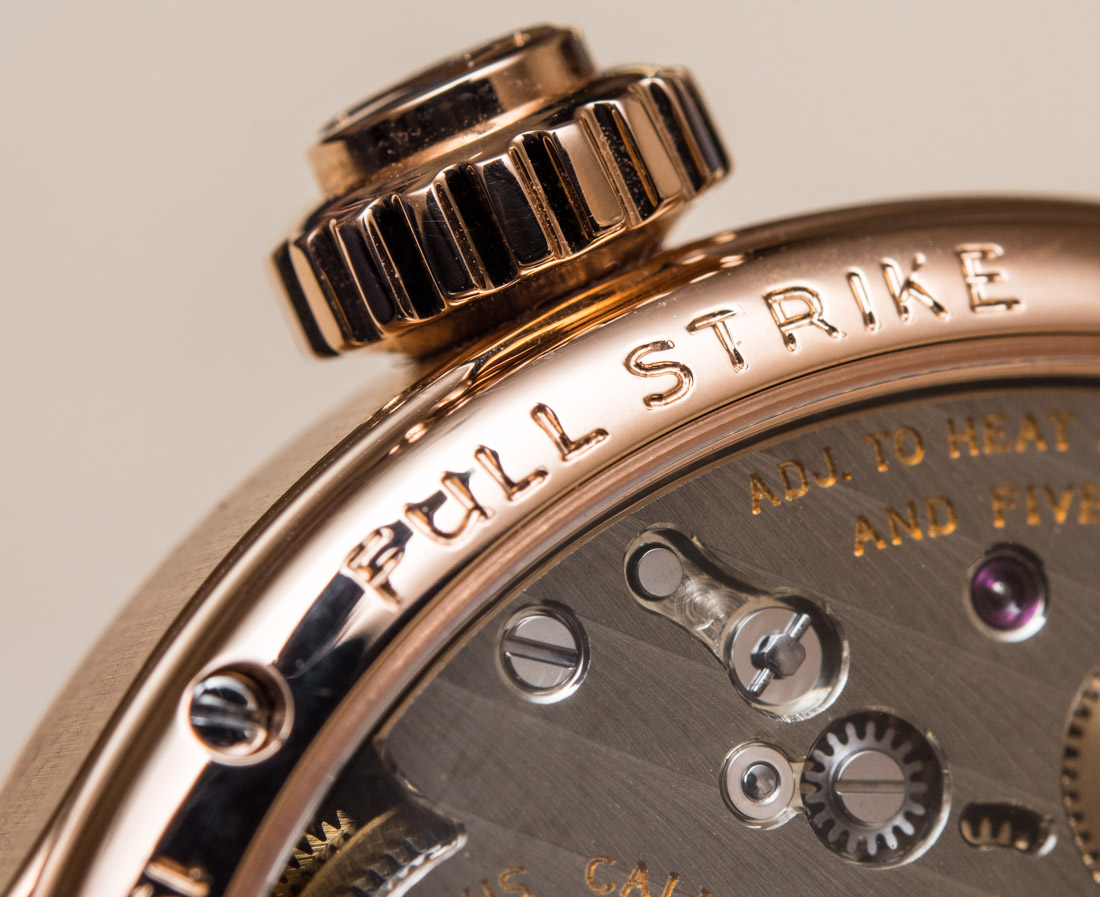
Three years for a piece of glass may sound like a lot, but the challenges were twofold: for one, they had to be able to find a way of cutting sapphire crystal to this very unusual shape, which in turn required new tools and new brackets that would hold the subject in a safe position, as the tools work their way around the crystal – hopefully, all without cracking it.
Once they could finally machine a complete piece, they had to start fine tuning it to get the best sound out of it. This required them to do some acoustic prototyping with sapphire crystal – arguably uncharted territories in engineering. Imagine going through the trouble of taking days or more to manufacture a single piece (and starting from scratch again if it cracked anywhere in the process) only to see if the modified shape sounds better or worse – and then imagine doing this back and forth for a total of three years.
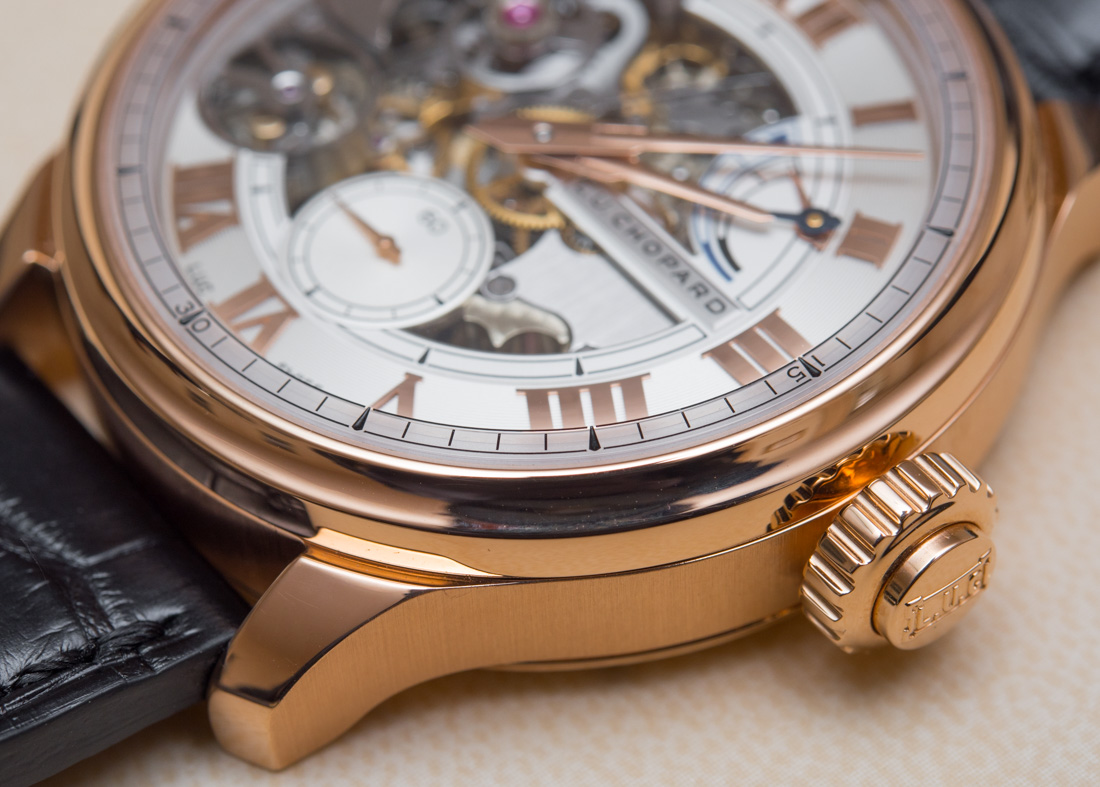
The Sound
As a result of the hammer’s crazy design and the even more astonishing (and, unsurprisingly) patented sapphire crystal shape, the Chopard L.U.C Full Strike has a very unique sound signature. Its sound is not the usual cold, metallic tone, but instead more full-bodied and… (wait for it!) crystal-clear. The gongs are tuned to two notes: C and F.
Chopard’s explanation may be a bit like reading the wine menu at a fancy restaurant but, truth be told, it does a good job at explaining what the Chopard L.U.C Full Strike sounds like: “the chime lingers pleasingly, with a very low sound-deadening factor. The tonal richness boasts unprecedented amplitude (…) and the intensity of its chime is astonishing.” Listen for yourself by clicking on the video above in slow-mo.
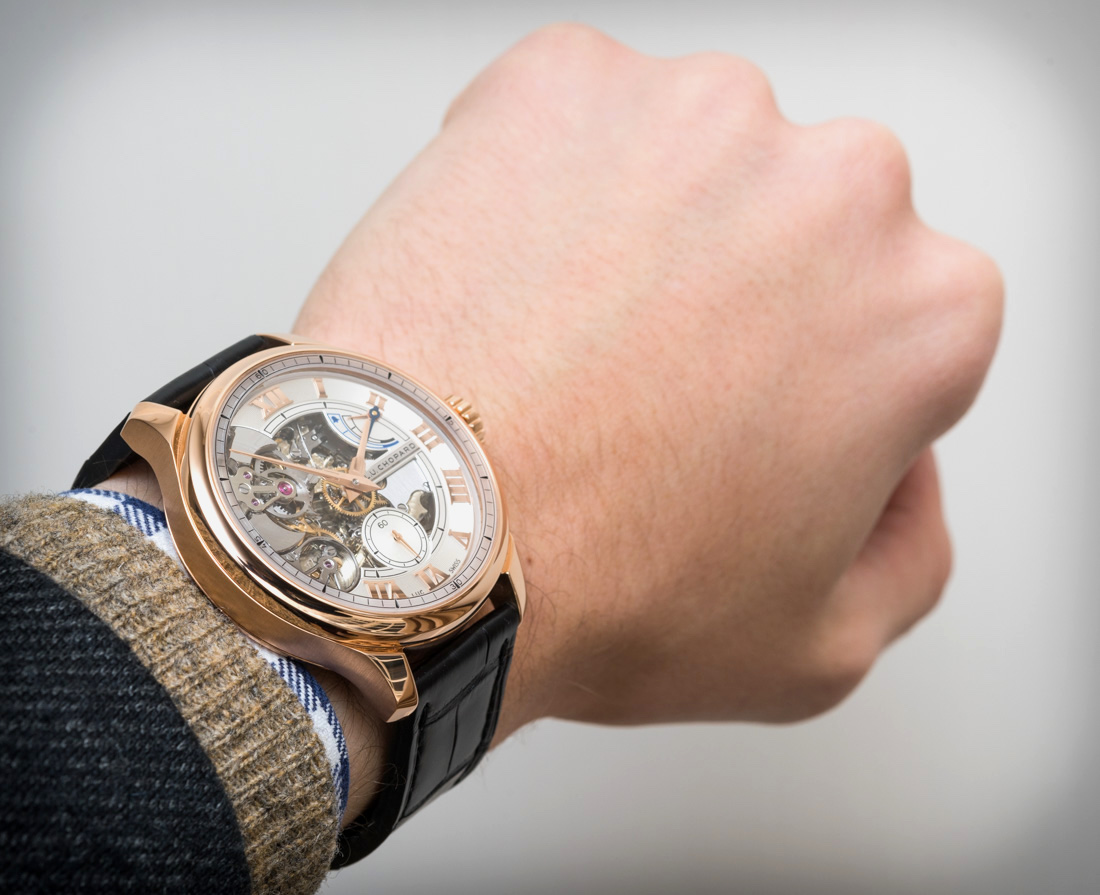
The Looks
The case measures an almost dress watch-like 42.5mm wide and 11.55mm thick. The crown is a massive 8.5mm wide, with large notches around its periphery for easy operation. The dial speaks for itself: it’s an amazing, widely skeletonized front element, with Chopard’s trademark bold and three-dimensionally curved, applied gold indices, incredibly detailed and uniquely styled hands, a running seconds sub-dial at 6, and power reserve indicators at the two o’clock position.
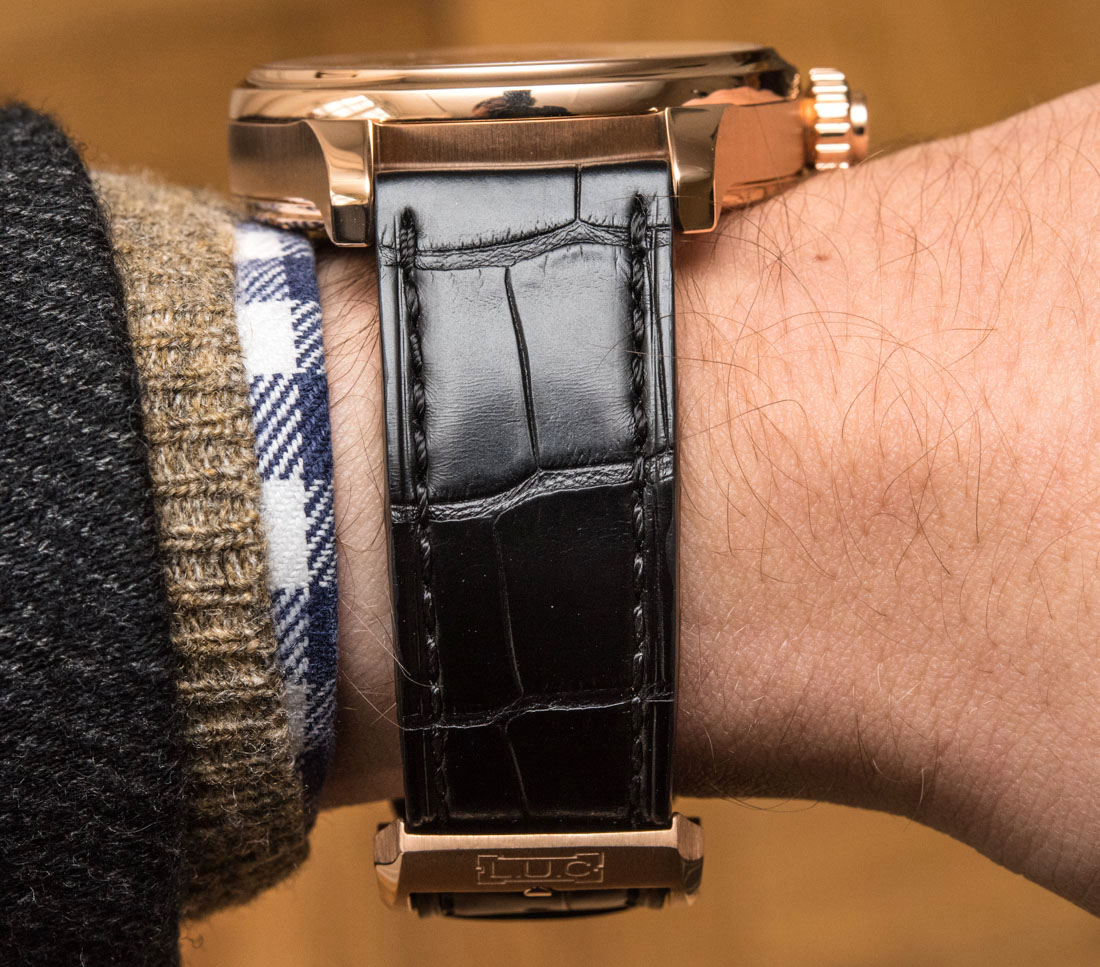

The 18k Fairmined rose gold looks very elegant and sensible, probably the least in-your-face hue of gold (after white gold, obviously). Here, on a CITES-certified alligator leather strap it is remarkably comfortable on the wrist, as the strap is perfectly flexible and soft, while it also holds the watch securely, thanks to the gold buckle. The strap is the last thing that one looks at when it comes to such a watch, but this one truly stands out and makes the Chopard L.U.C Full Strike feel like one of the most comfortable watches I ever had the privilege of wearing.
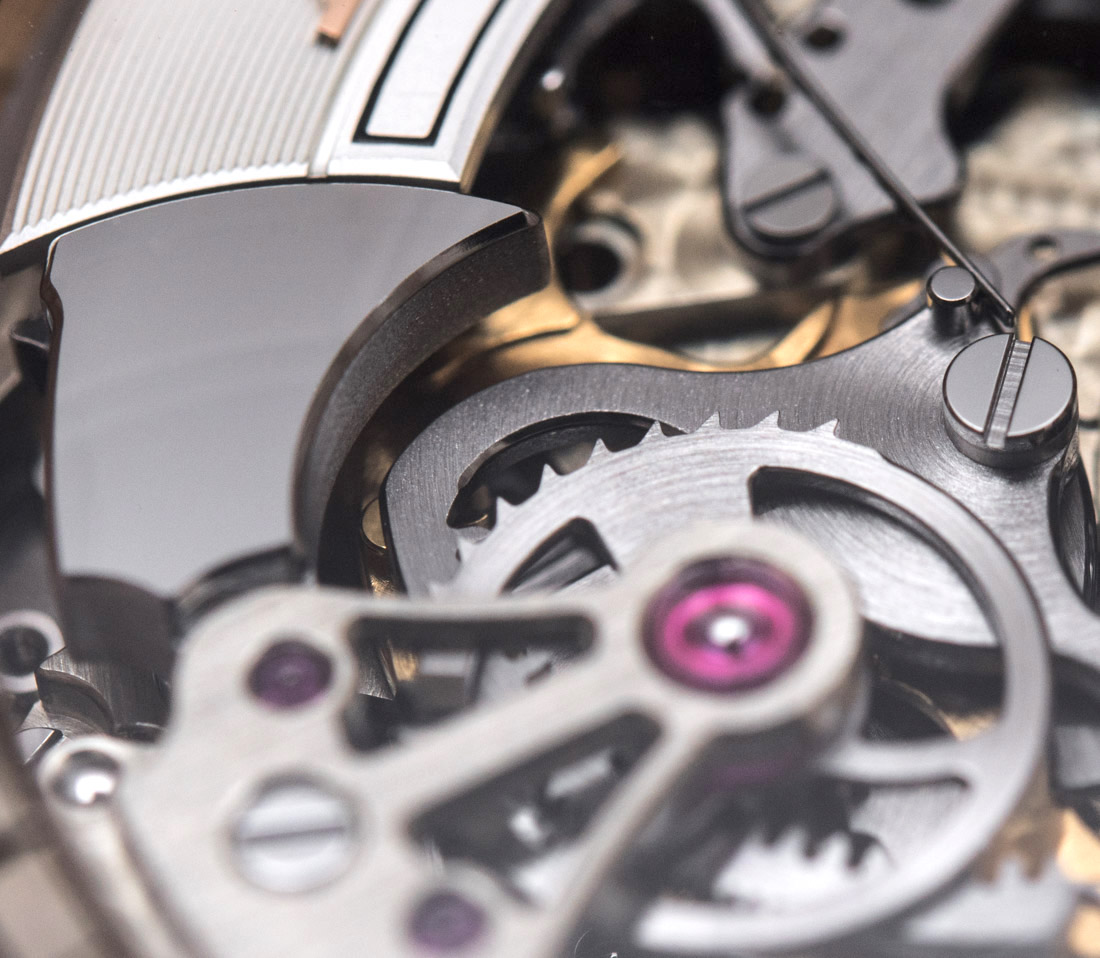
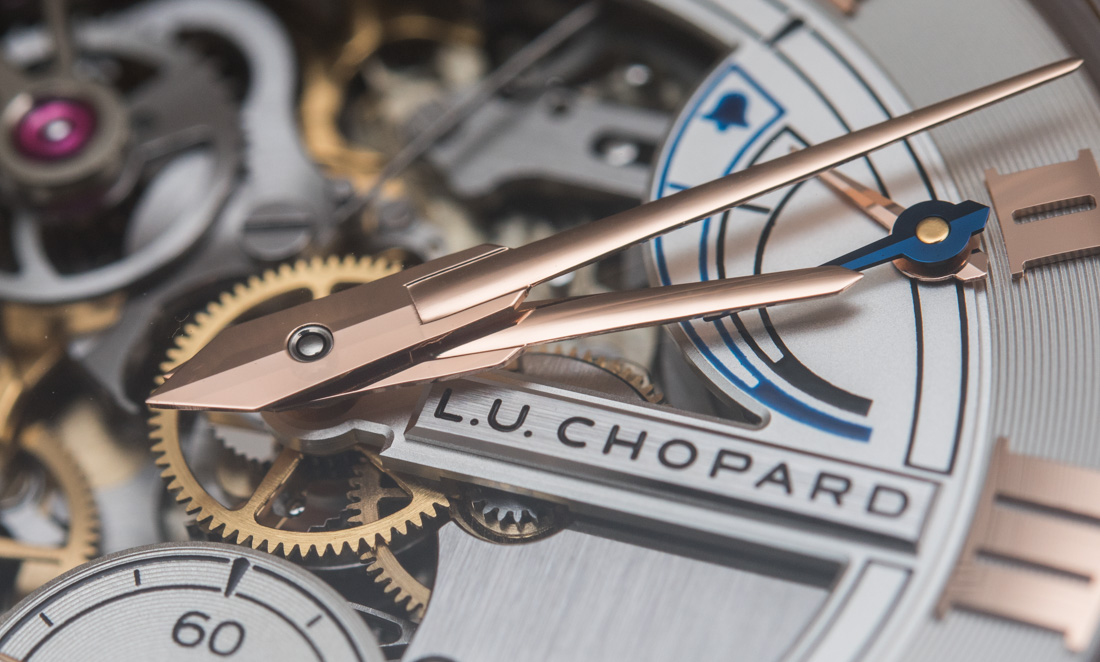
At the end of the day, though, it’s still the little (and not so little) details that really make a watch, and the Chopard L.U.C Full Strike shows no shortage of those. The hands are Chopard L.U.C’s trademark “Chrysler Building” hands (strictly speaking, they are Dauphine style), the dial plays with different colors and surfaces, and of course you still always have the minute repeater’s beautifully finished parts as the thick icing on the cake.
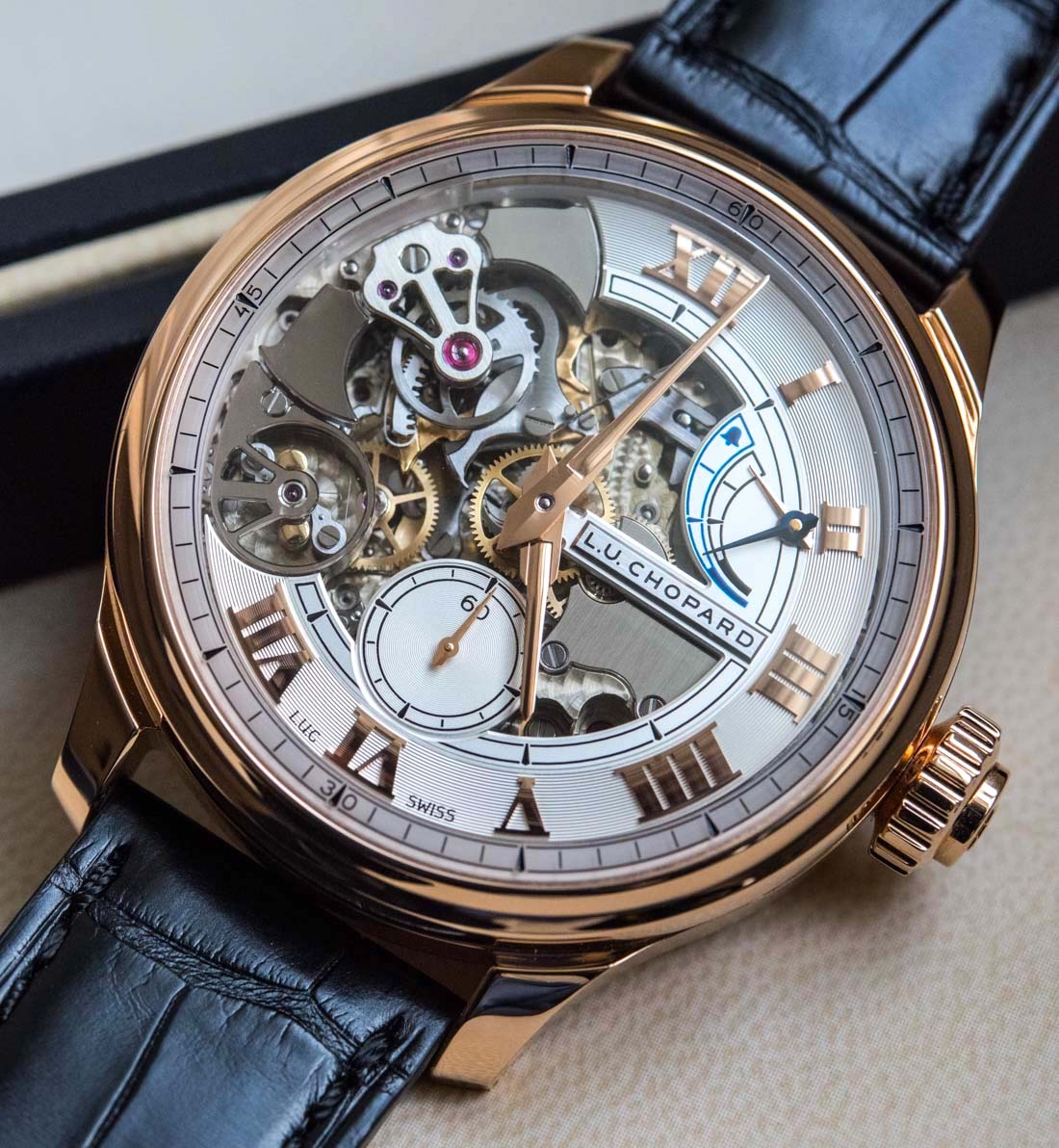
Price & Availability
The Chopard L.U.C Full Strike will be available in 18k Fairmined rose gold exclusively, in a numbered run of 20 pieces. Price for the Chopard L.U.C Full Strike will be CHF265,000 – up there, but among newly developed minute repeaters of this caliber, it is quite competitive. chopard.com

